Hello everyone, beside i have stop blogging systematically , today was a very special day for me. It was one of our two national celabration, so we had free time to enjoyourselves. We decided to had a daily road trip and to the museum of Vergina. We started early in the morning, so we avoid as much as was possible the hot sun.
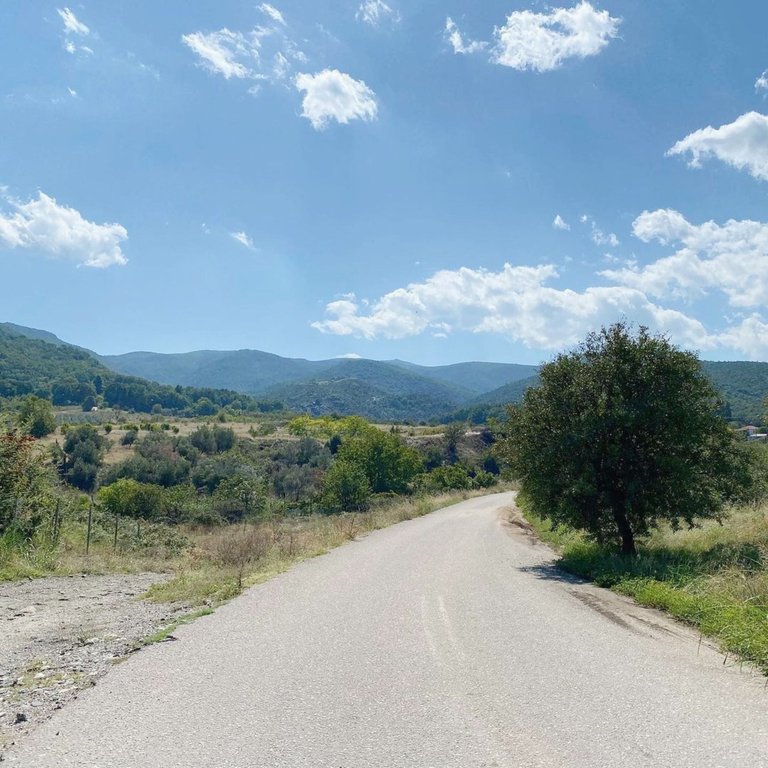
...but what and where is Vergina
Vergina was in the foothills of northern Greece, the small town of Vergina is a treasure trove of ancient history. The town is home to the famous its museum, which houses some of the most remarkable artifacts from the ancient kingdom of Macedon. A day trip to Vergina is a must for anyone interested in Greek history and culture, and a visit to the museum will take you on a journey through the kingdom's rise to power.
How to get there
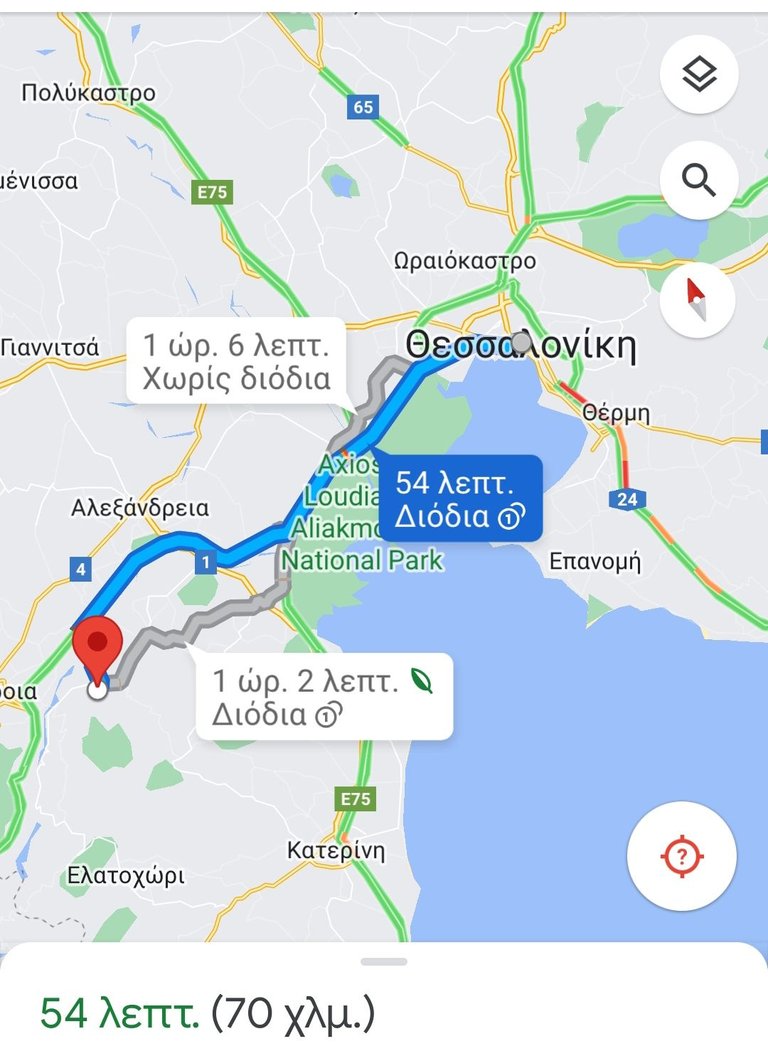
Vergina is located approximately 80 km southwest of Thessaloniki, the second-largest city in Greece. If you're traveling from Thessaloniki, the easiest way to get to Vergina is by car. The drive takes about an hour and a half, and the route is scenic, with stunning views of the countryside along the way. This was our choice.
Alternatively, you can take a bus from Thessaloniki's bus station, which runs daily to Vergina. The journey takes about two hours (Iam not sure about it) to arrive here in the entrance of the museum.
Exploring the Museum
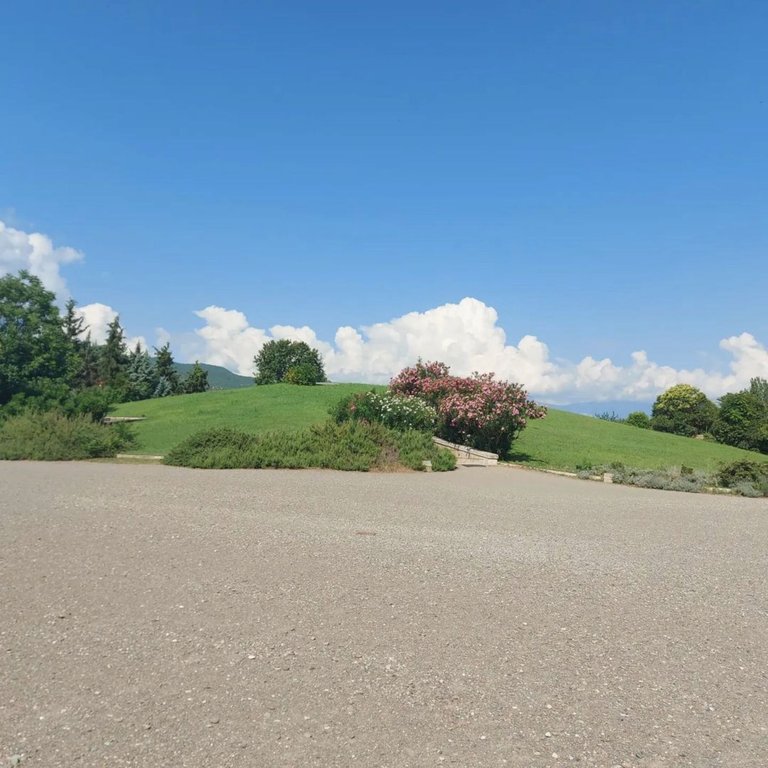
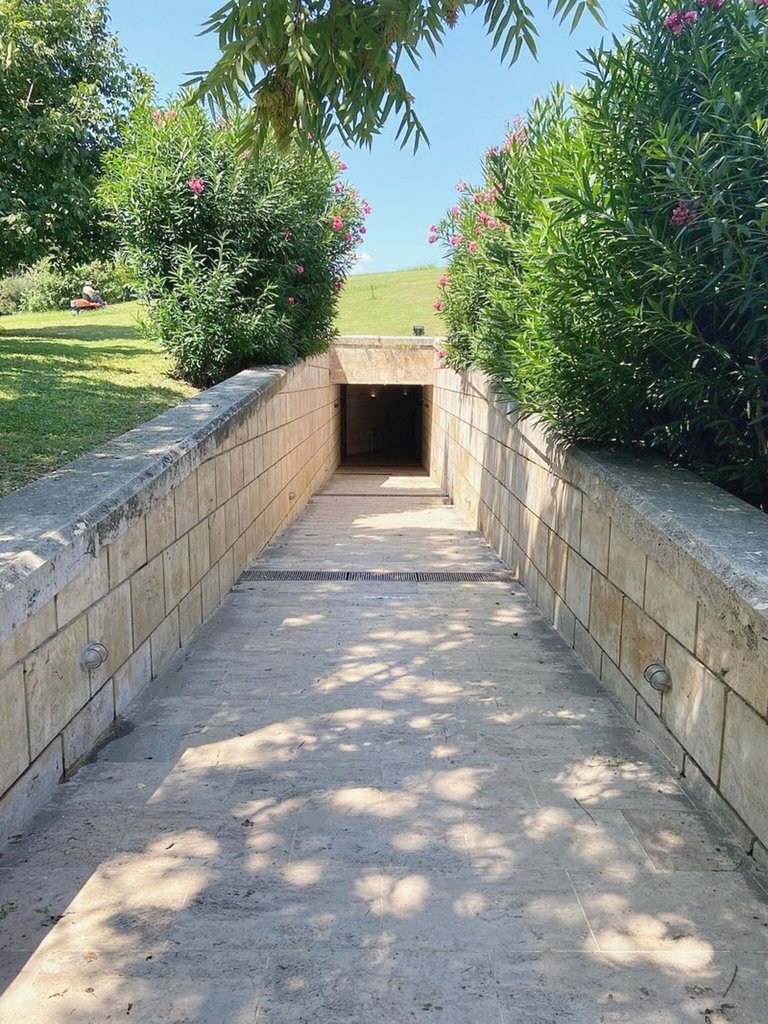
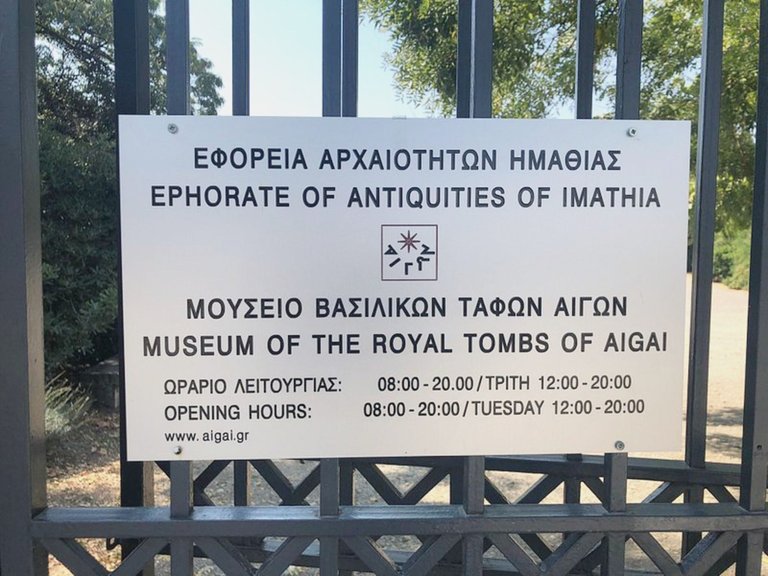
The Vergina Museum is spread across two levels, with the ground floor exhibiting the objects from the tombs and the first floor focusing on the history of Macedon. We decided to start with the ground floor, which houses the museum's most significant exhibit: the tomb of King Philip II.
The Tomb of King Philip II
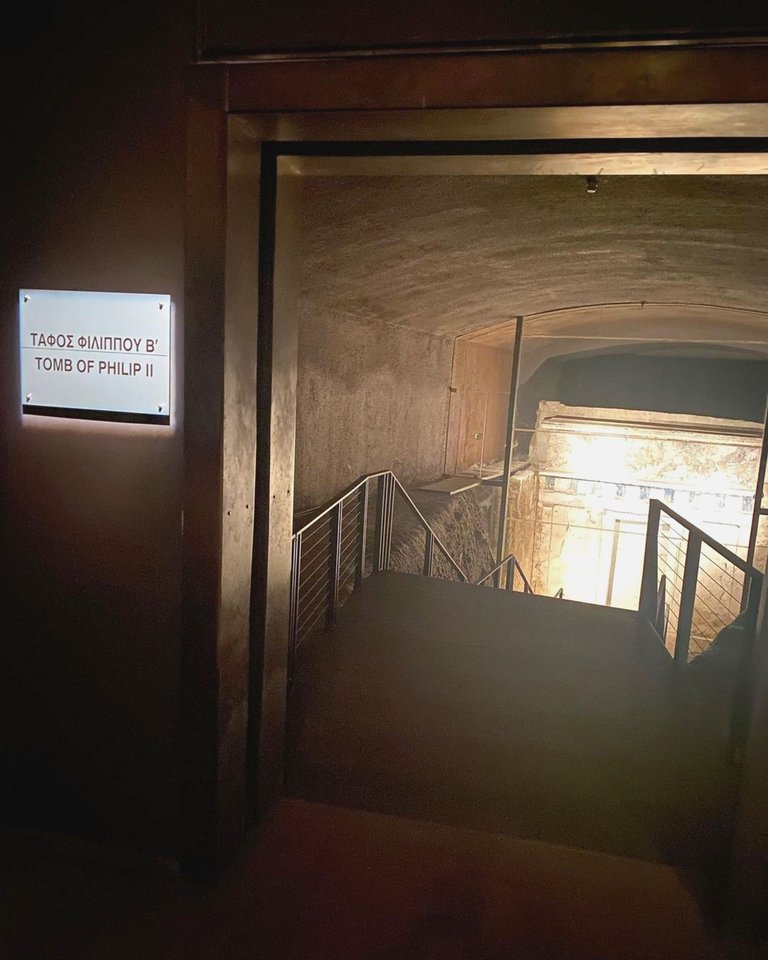
The most famous burial site in ancient Macedonia is the tomb of King Philip II, which was discovered in Vergina in 1977. The tomb contained an incredible treasure trove of artifacts, including a golden larnax containing the remains of the King and a golden wreath that adorned his head. The tomb also contained a range of other objects, including weapons, armor, and pottery. These objects provided a fascinating glimpse into the beliefs and practices of the ancient Macedonians.
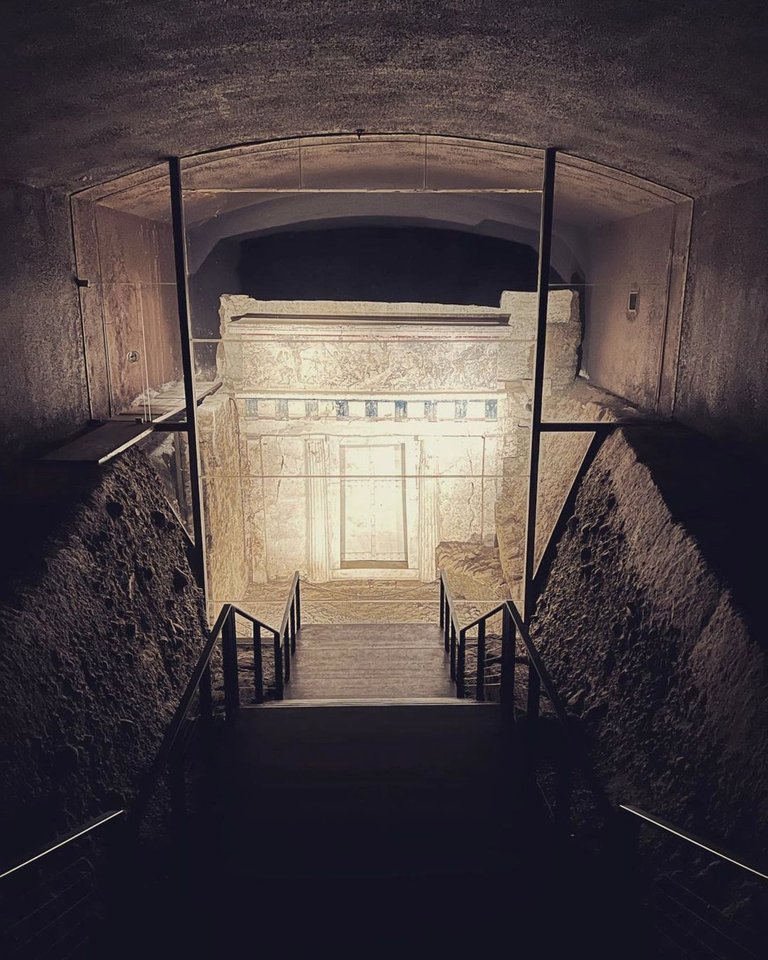
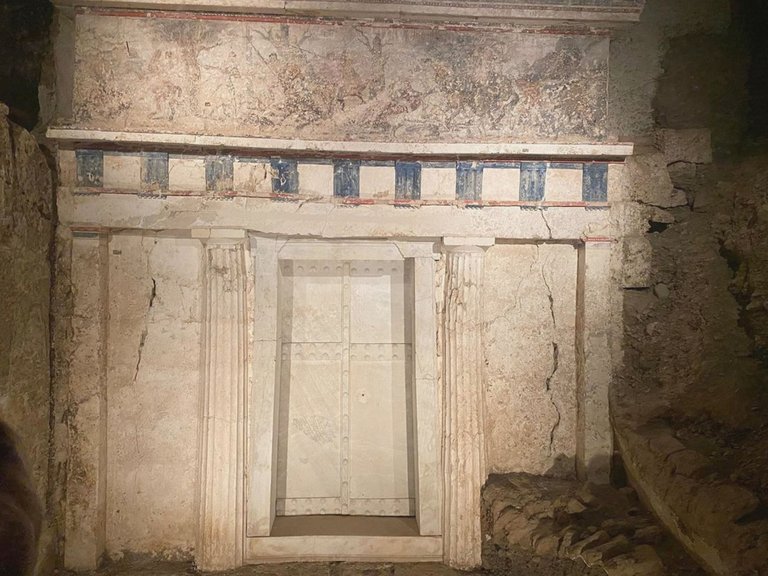
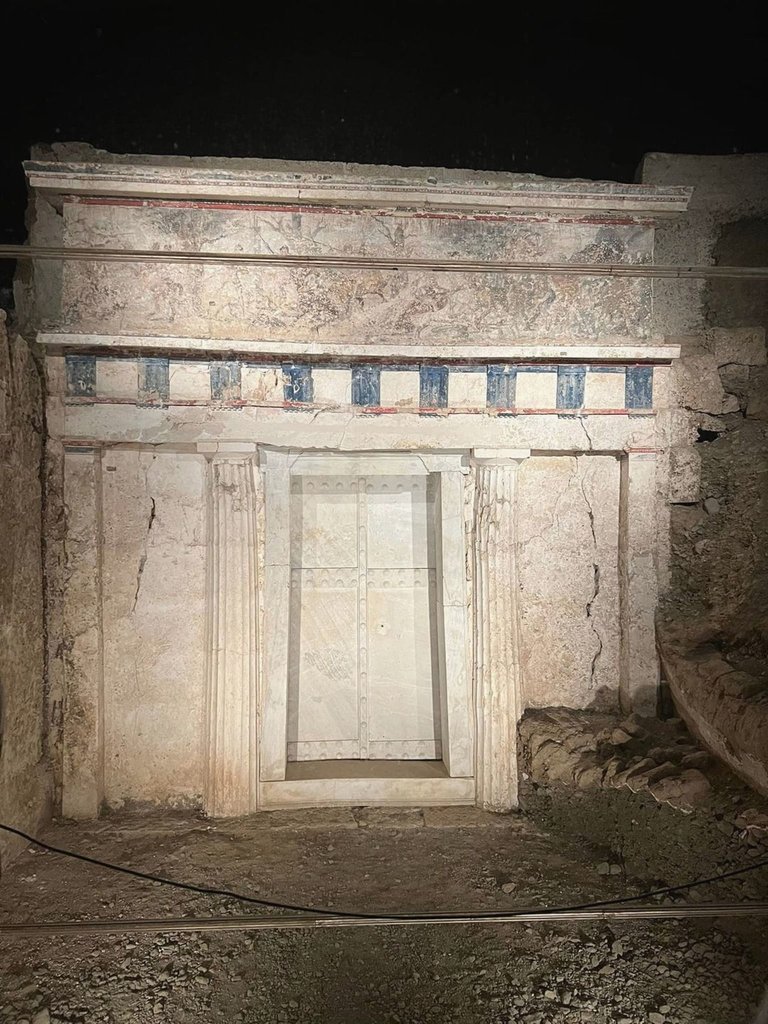
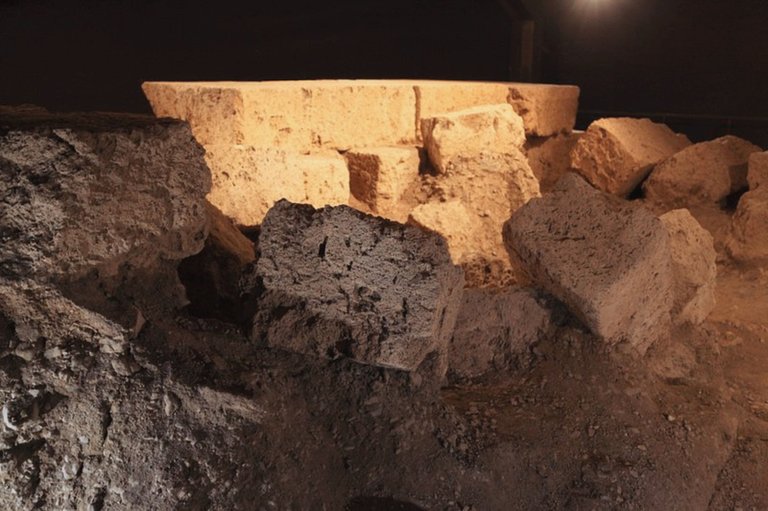
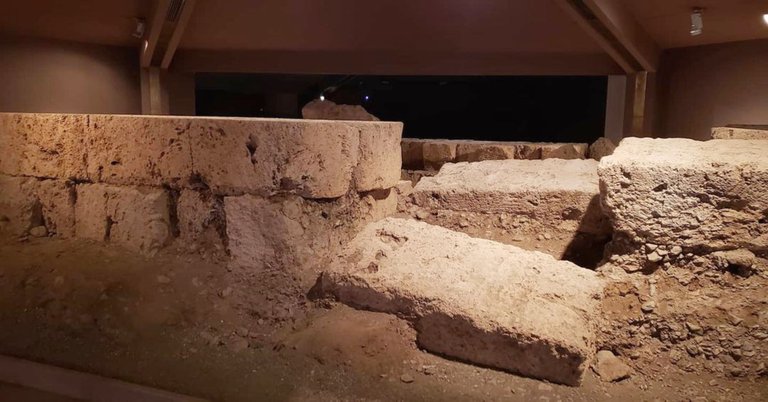

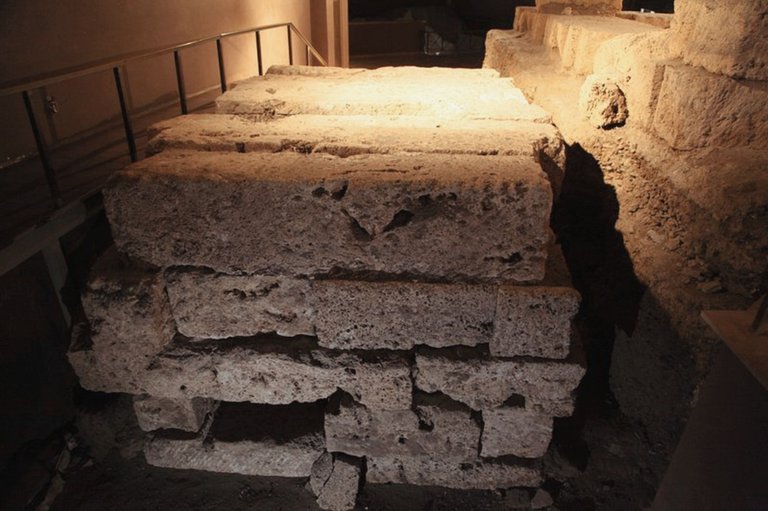
The tomb of King Philip II is located in the museum's lower level, and it's the most famous exhibit in the museum. The tomb was discovered in 1977 by archaeologist Manolis Andronikos, and it's considered one of the most important archaeological discoveries of the 20th century.
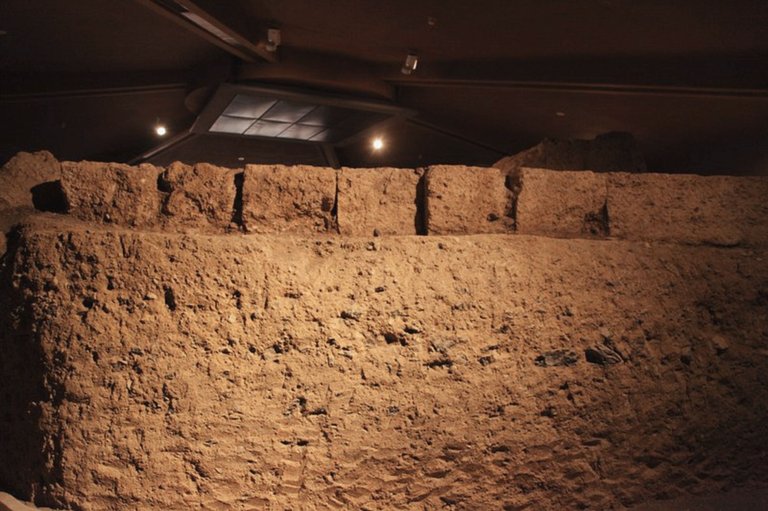
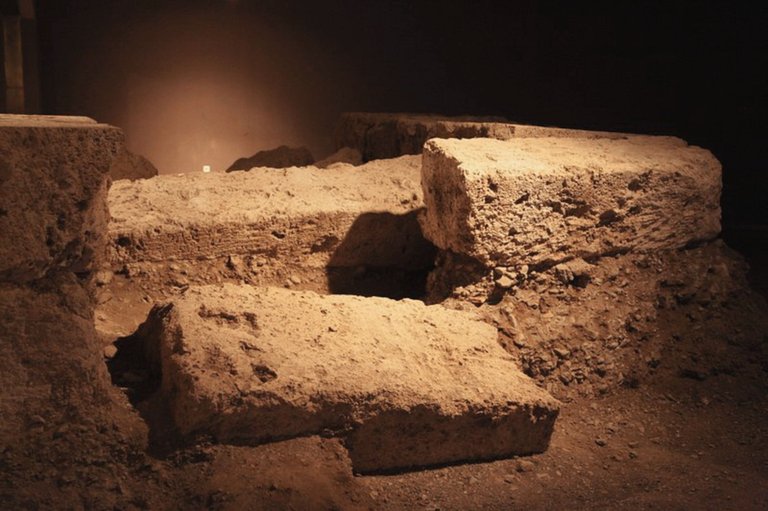
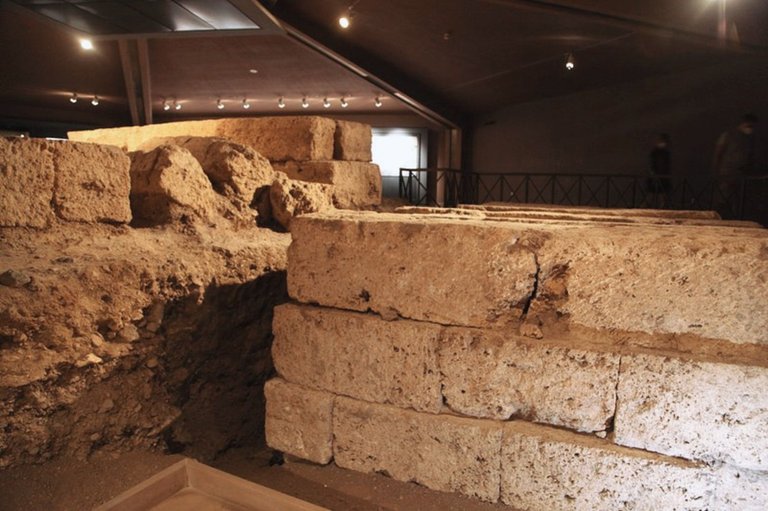
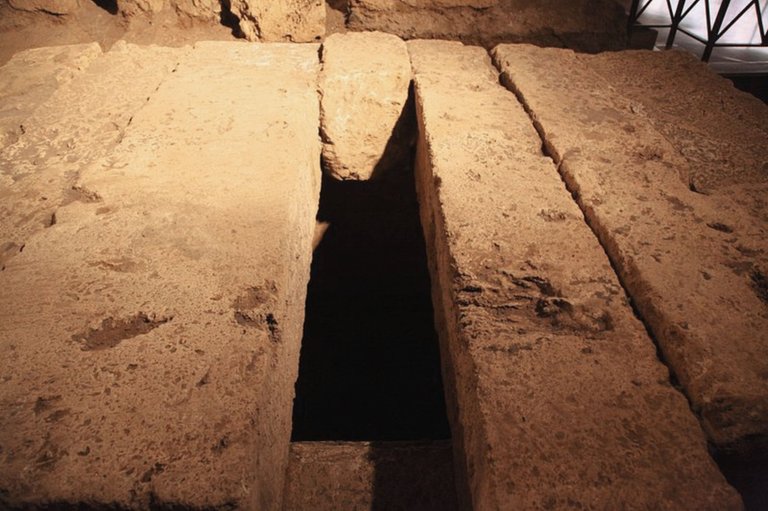
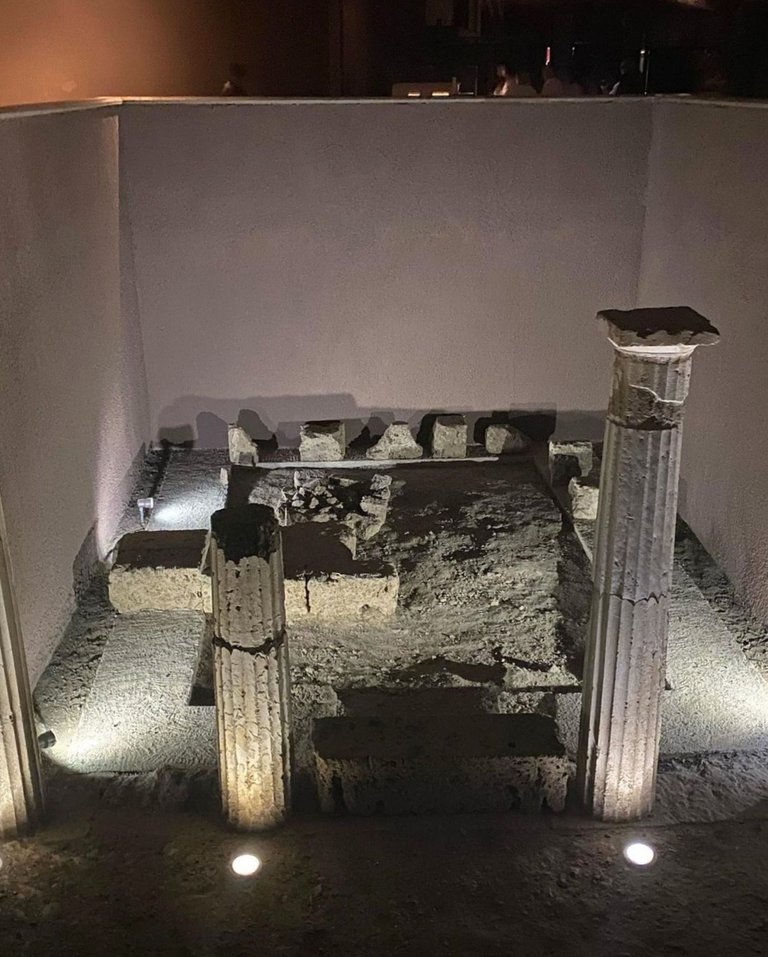
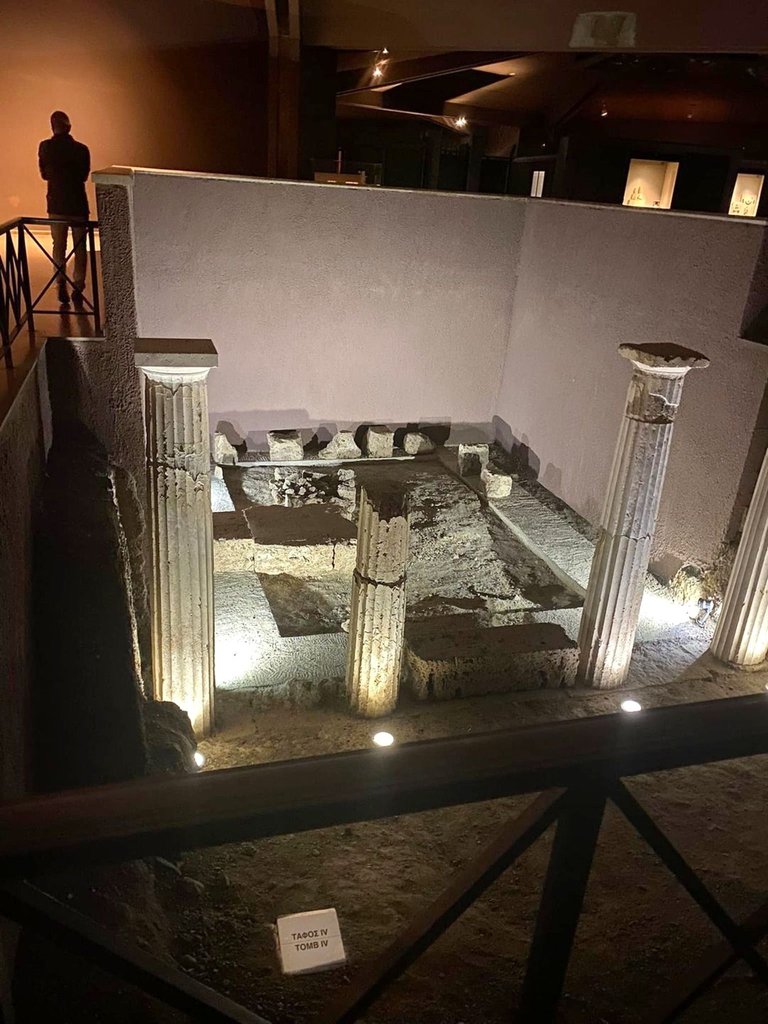
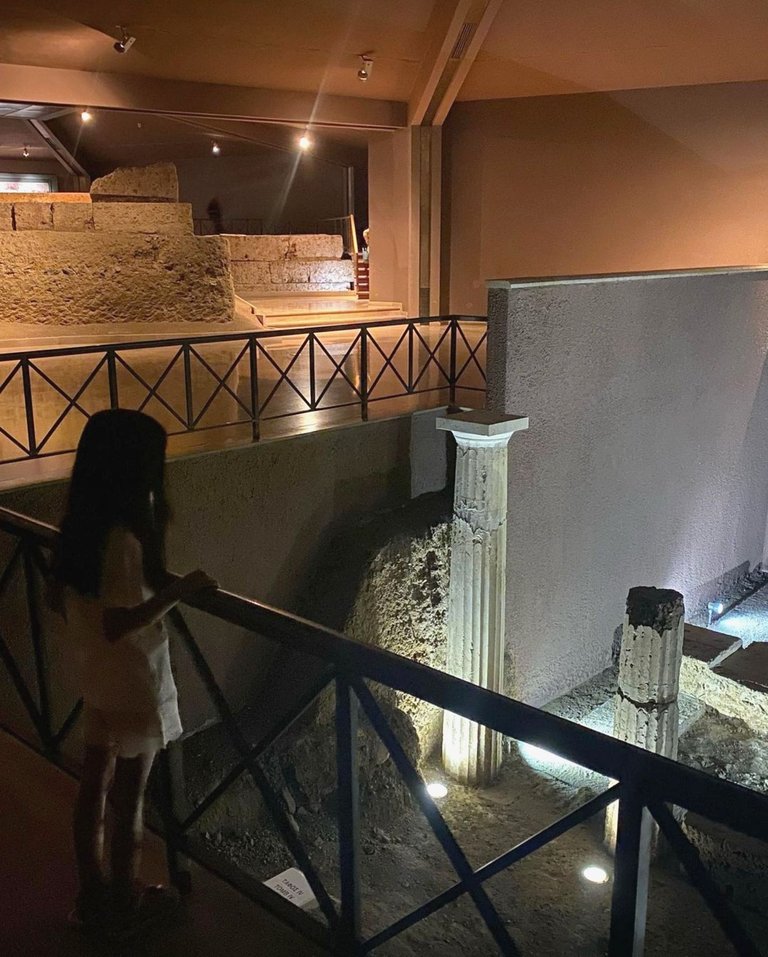
As we entered the tomb's chamber, we were struck by its size and grandeur. The tomb is incredibly well-preserved, with its stunning frescoes and intricate decorations still intact. The tomb contained an incredible treasure trove of artifacts, including a golden larnax containing the remains of the King and a golden wreath that adorned his head.
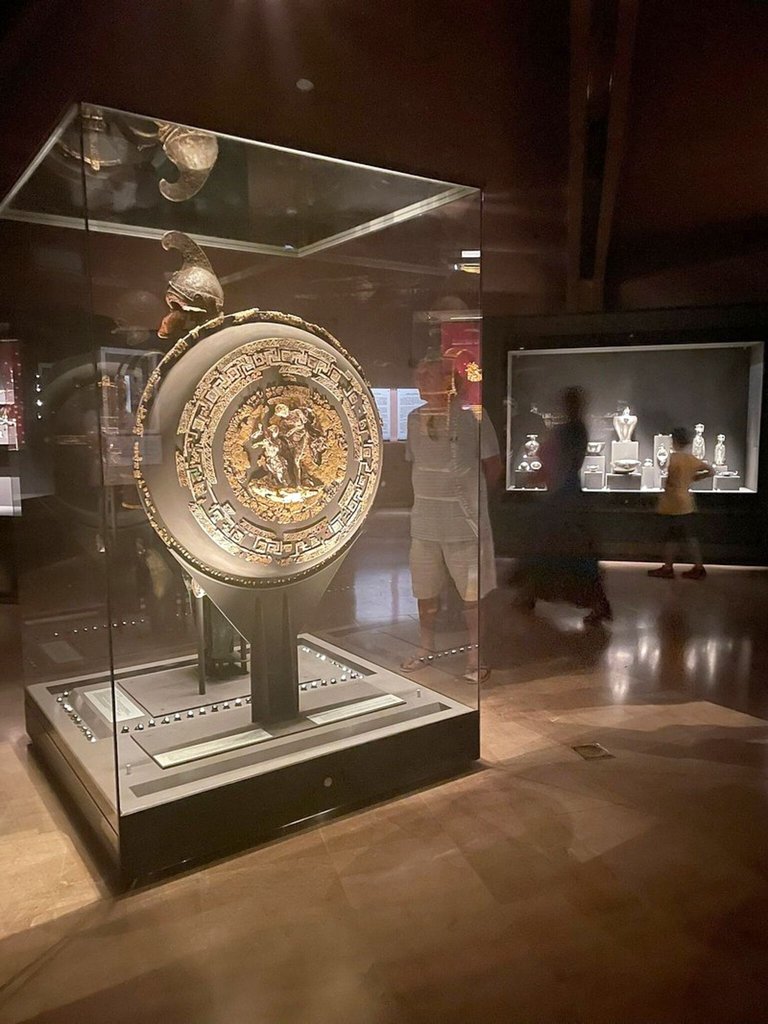
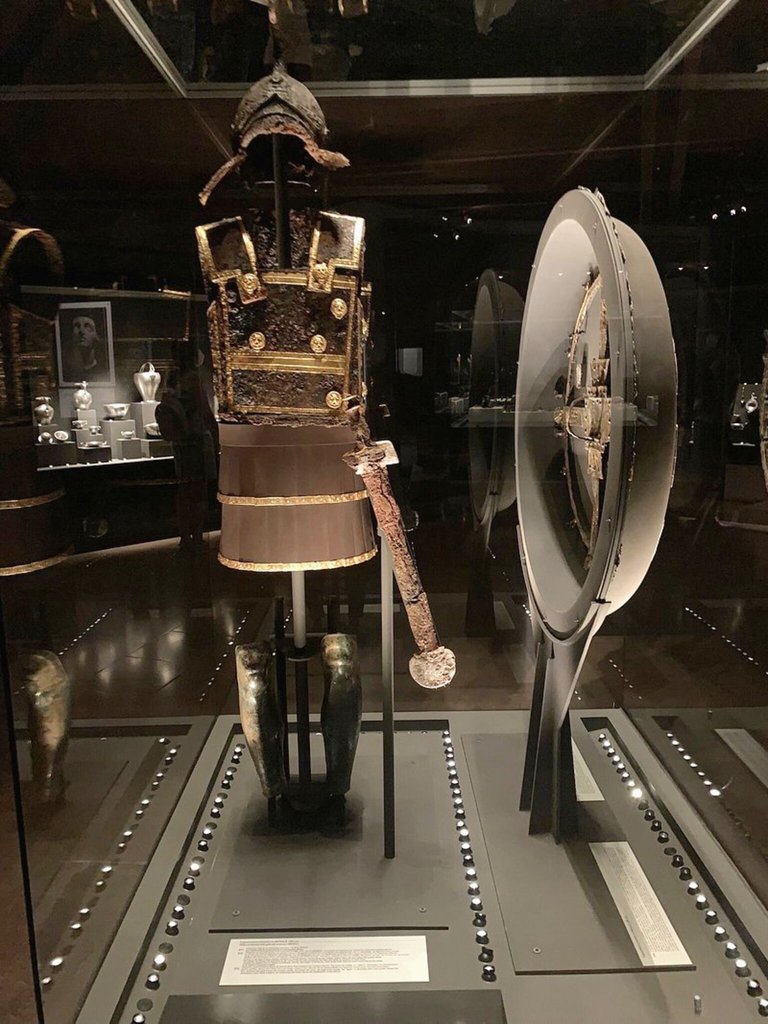

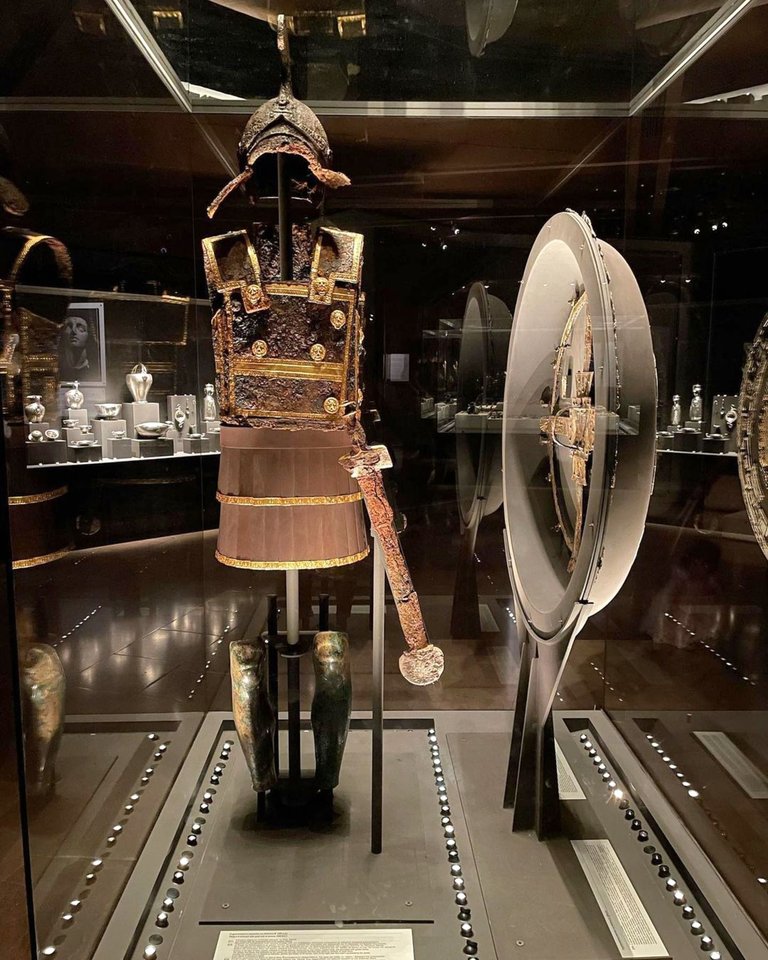
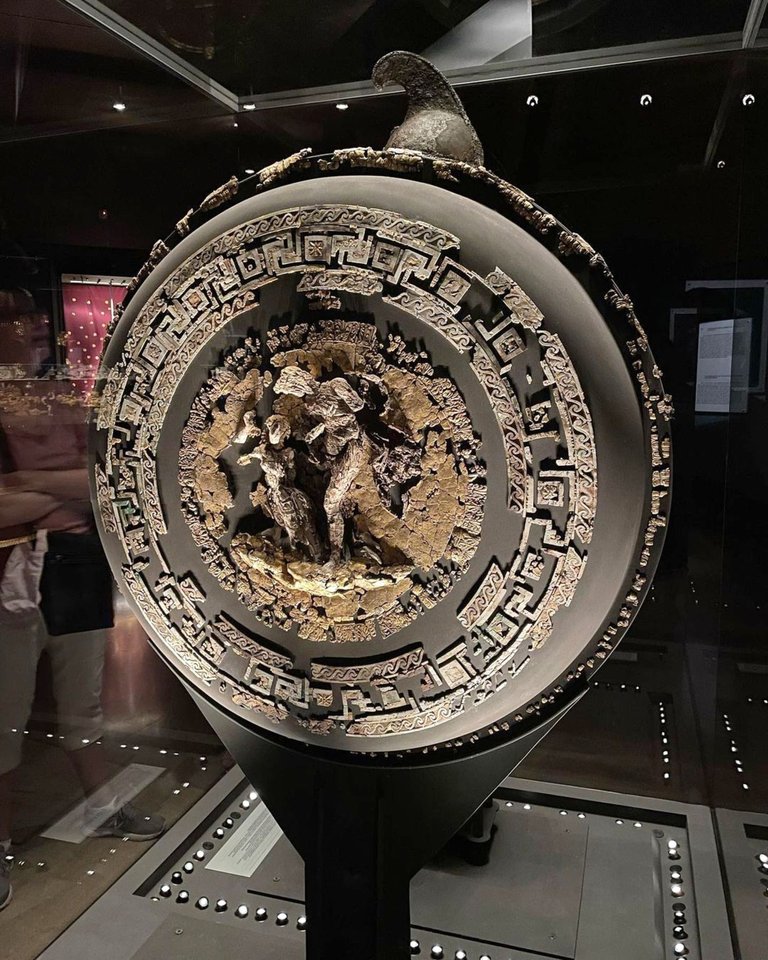
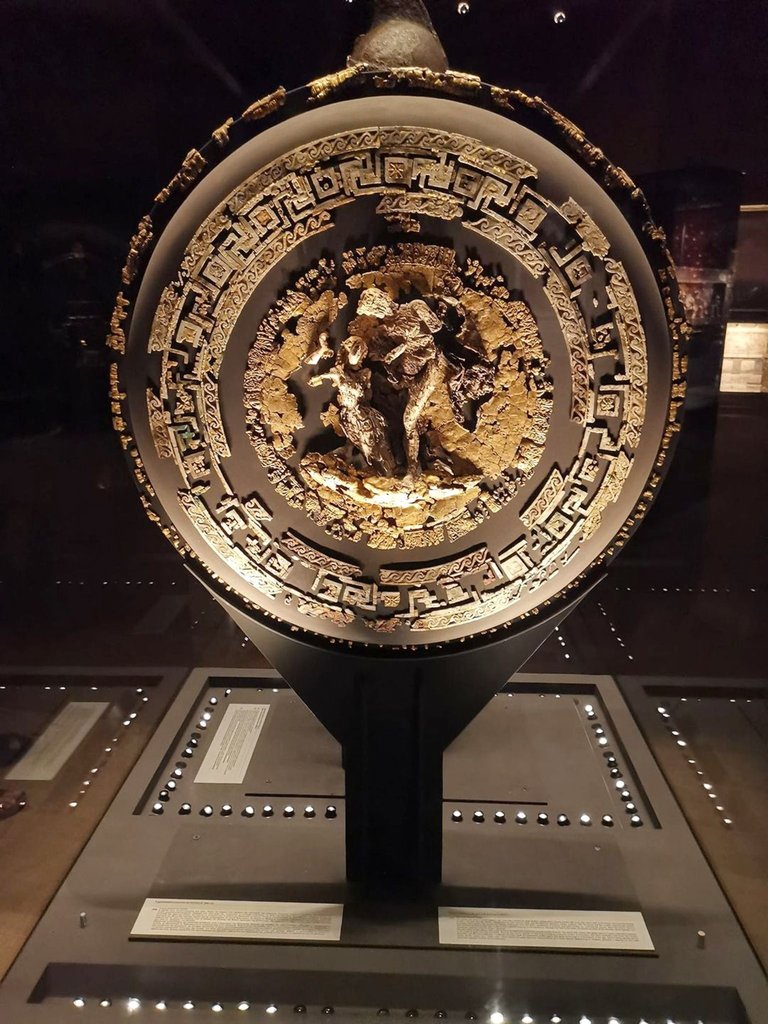
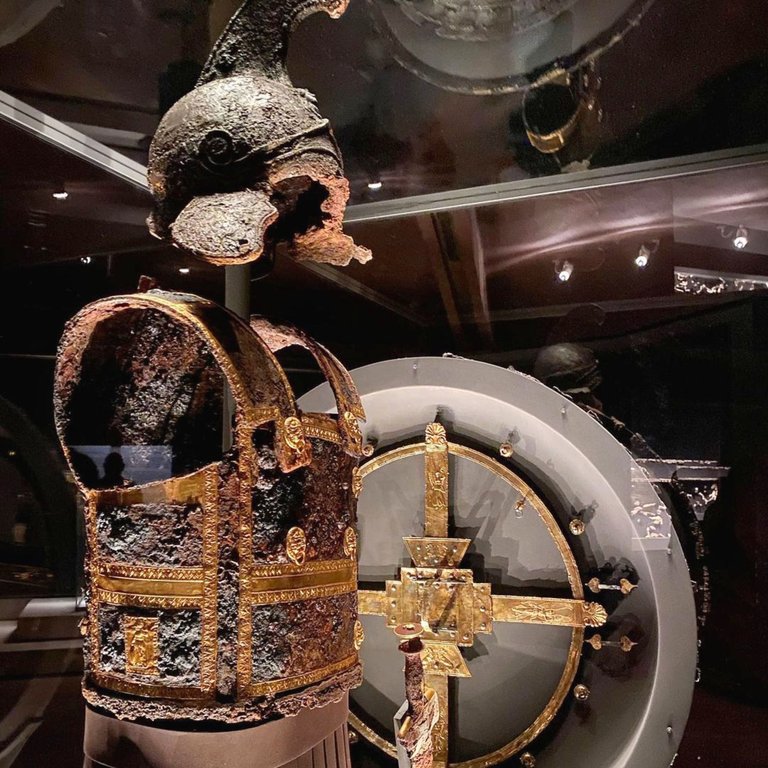



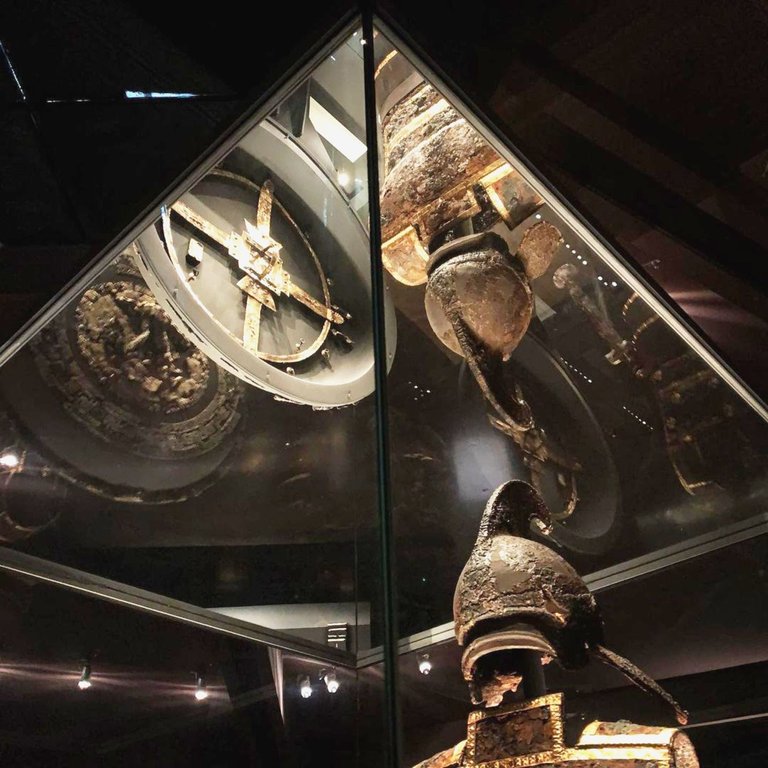
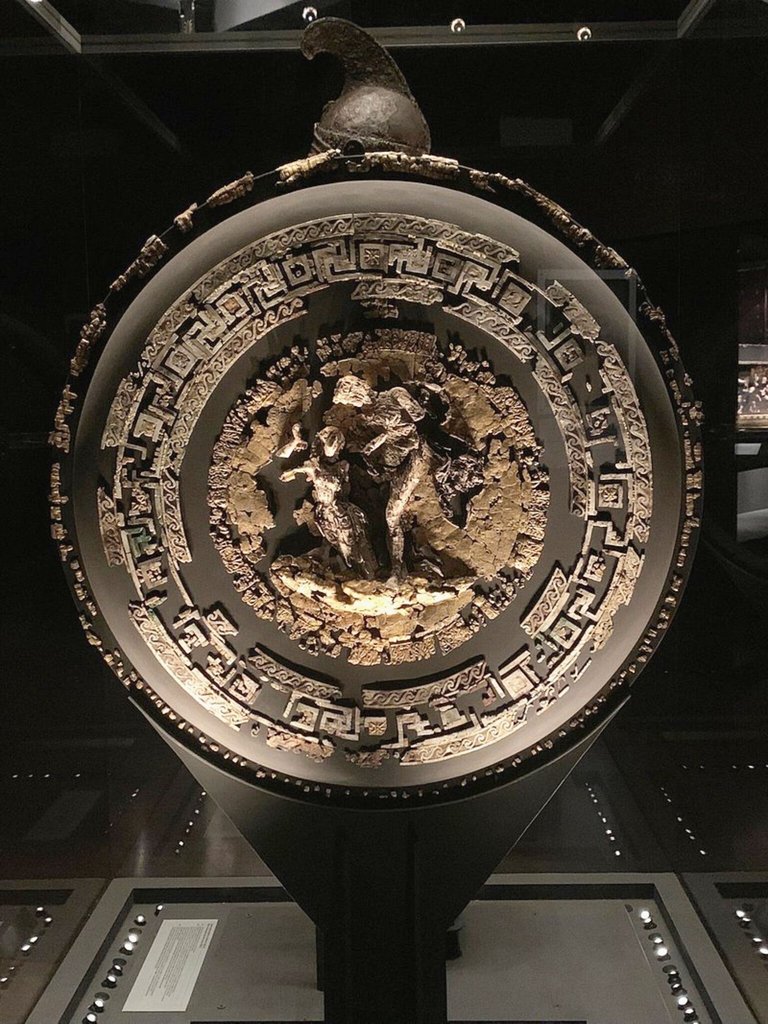

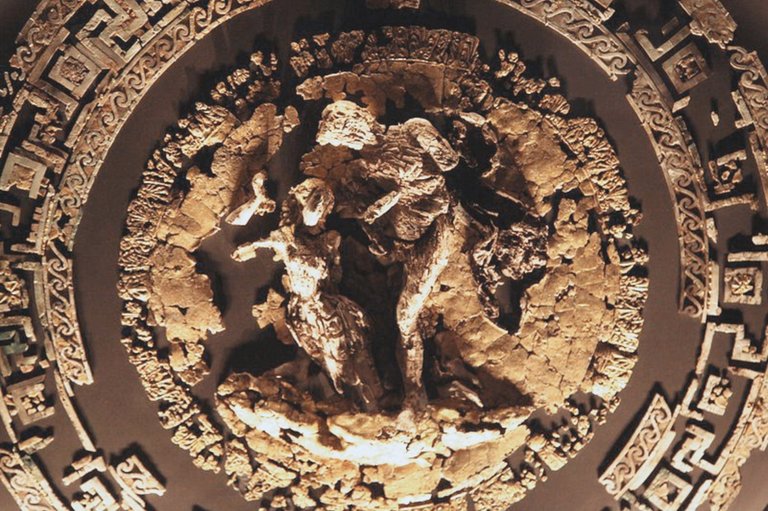
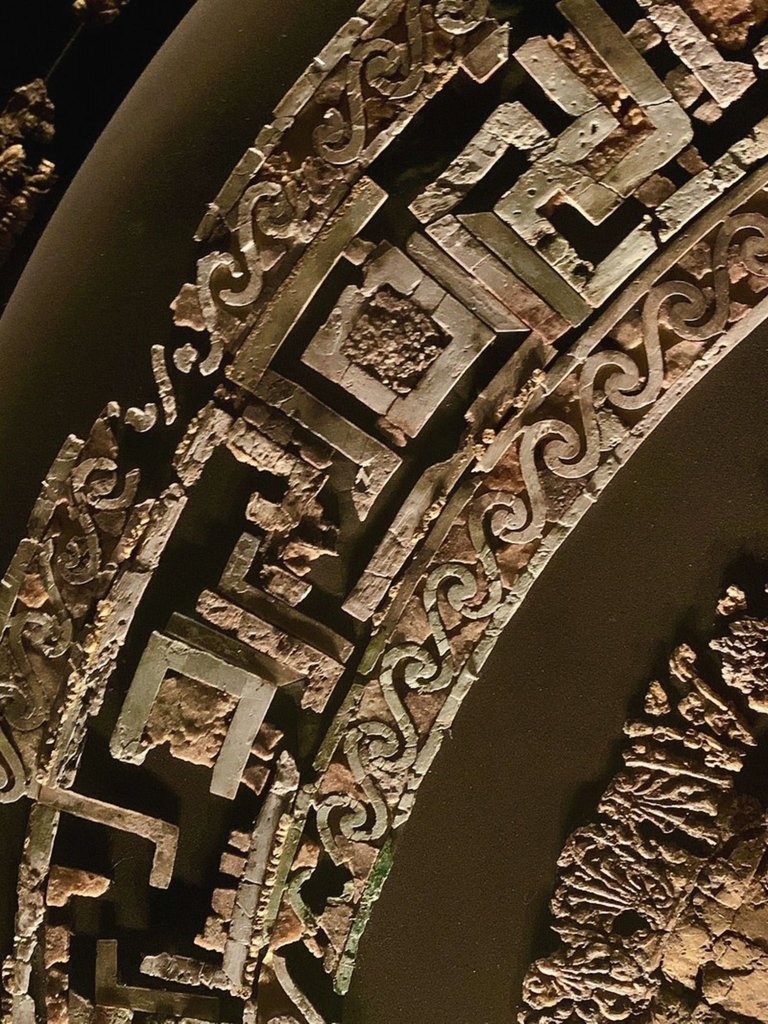
The frescoes depict hunting scenes and scenes from Greek mythology, including the abduction of Persephone by Hades. There are also portraits of King Philip II and his family, which provide a fascinating glimpse into their lives.
The museum's curators have done an excellent job of displaying the tomb's artifacts, and we were able to see them up close and in detail. The museum also provides audio guides, which provide additional information and context for the exhibits.
The Vergina Sun
After exploring the tomb, we made our way to the museum's upper level, which focuses on the history of Macedon.
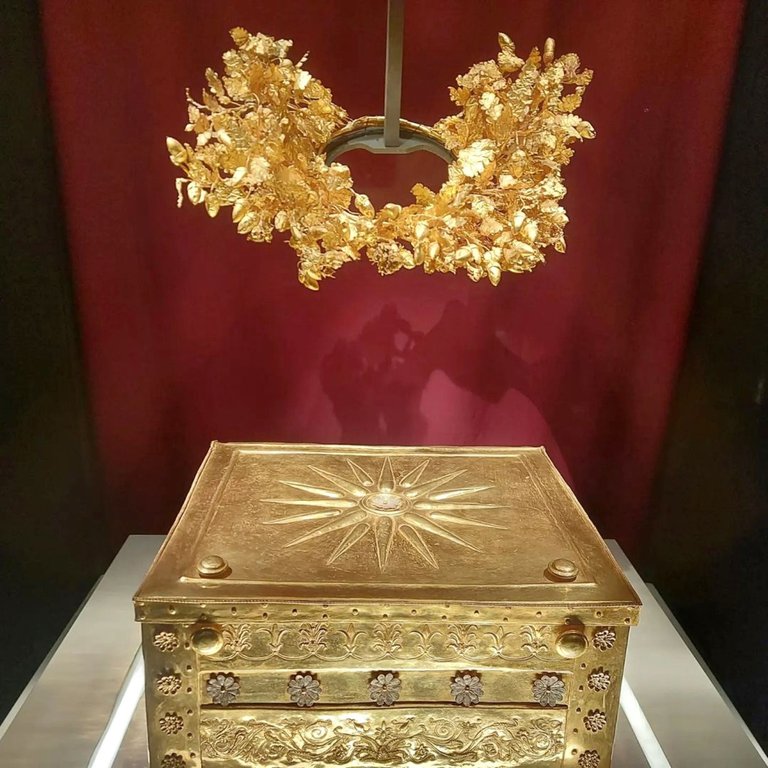
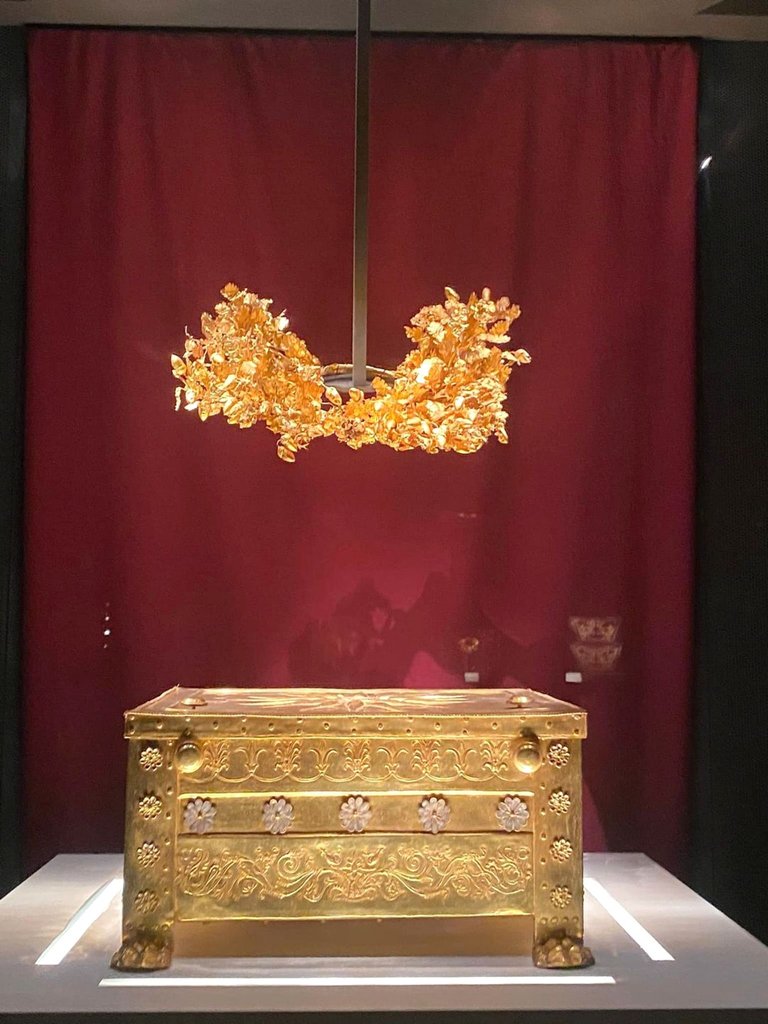

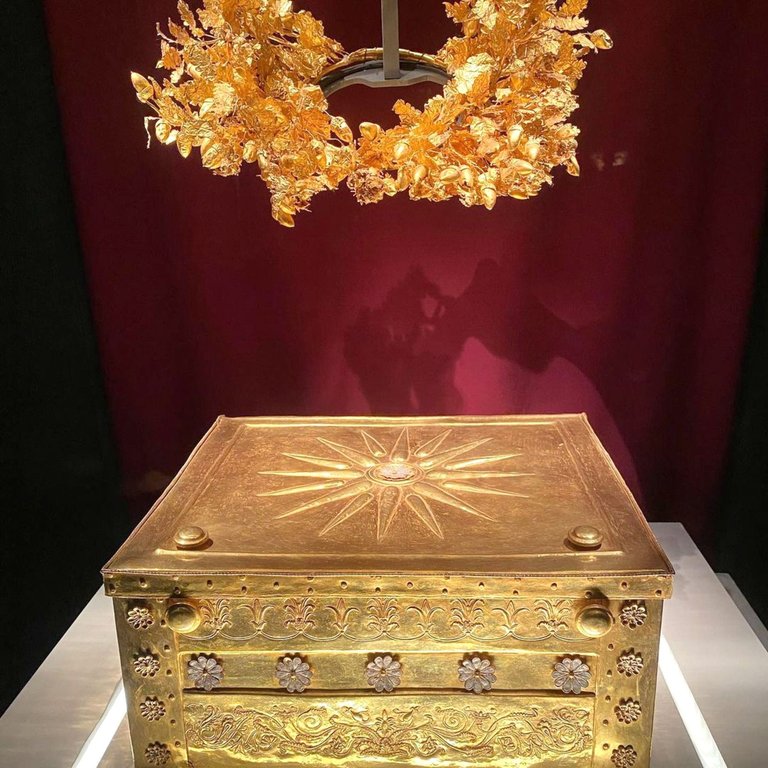

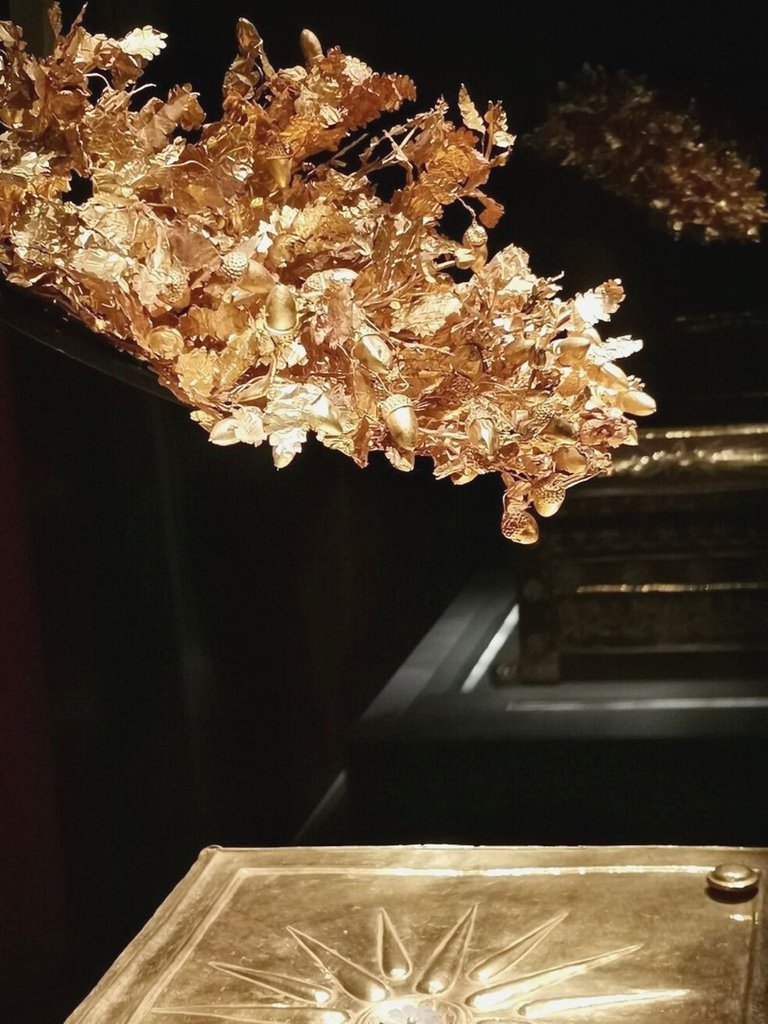
One of the most recognizable exhibits on this level is the Vergina Sun, which is widely recognized as a symbol of Macedonian heritage. The Vergina Sun was found on a golden shield that was discovered in the tomb of King Philip II. The symbol is a stylized sun with sixteen rays, and it has become one of the most iconic symbols of ancient Greece.
The Vergina Sun is displayed prominently in the museum, and we were able to see it up close and in detail. The museum's curators have provided a wealth of information about the symbol, its meaning, and its significance to the ancient Macedonians.
The rest of museum
The museum's upper level is dedicated to the history of Macedon, and it provides a fascinating overview of the kingdom's rise to power. Visitors can see how the ancient Macedonians lived and worked, with displays of pottery, jewelry, and weaponry that provide insight into their daily.

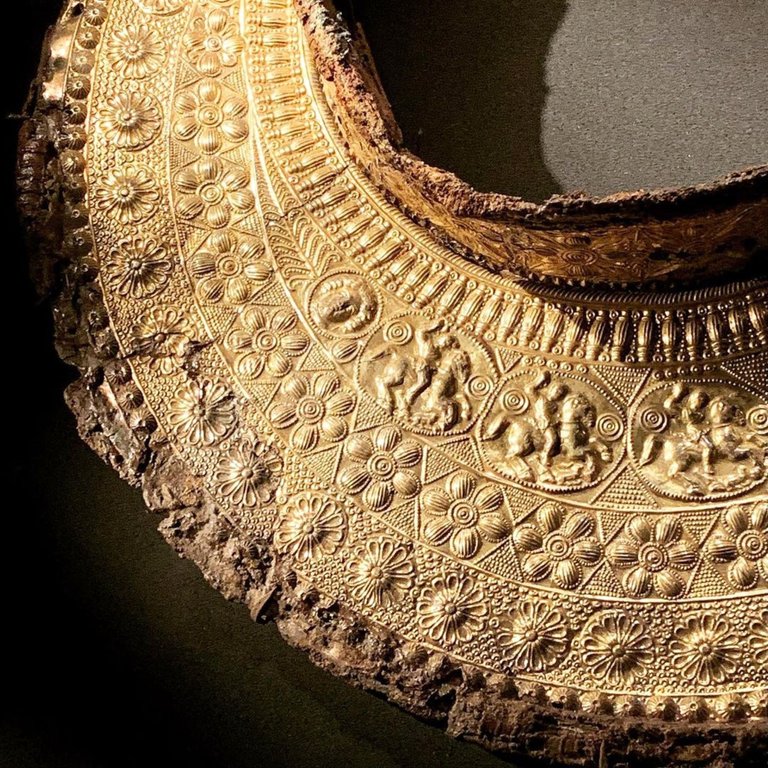
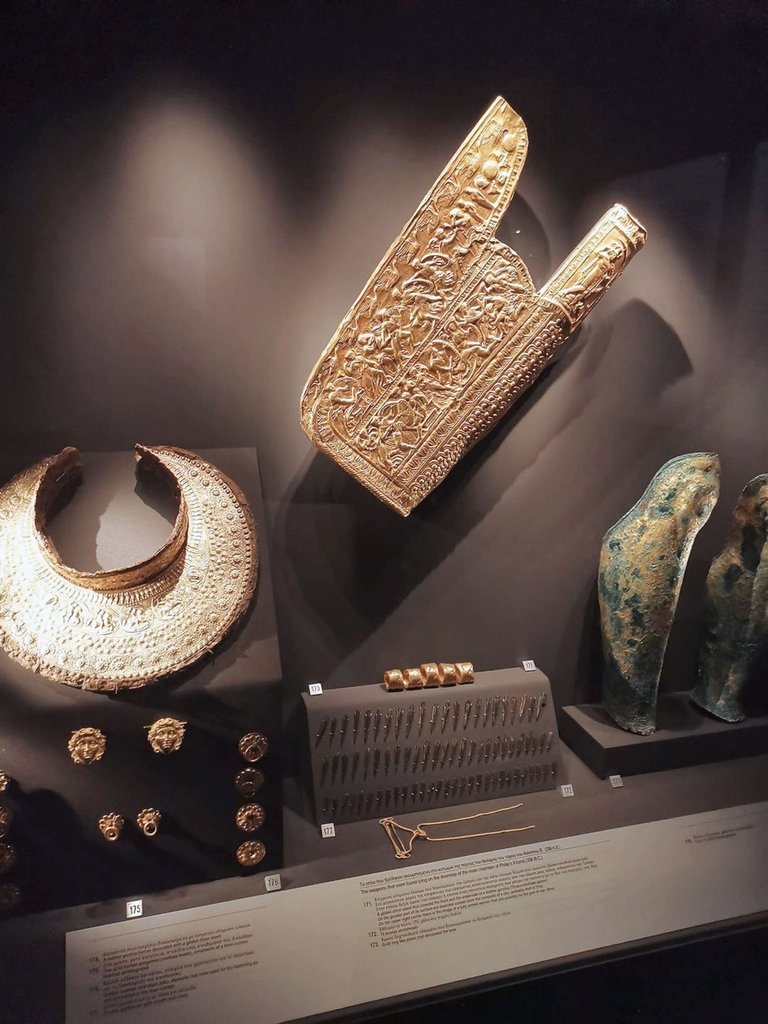
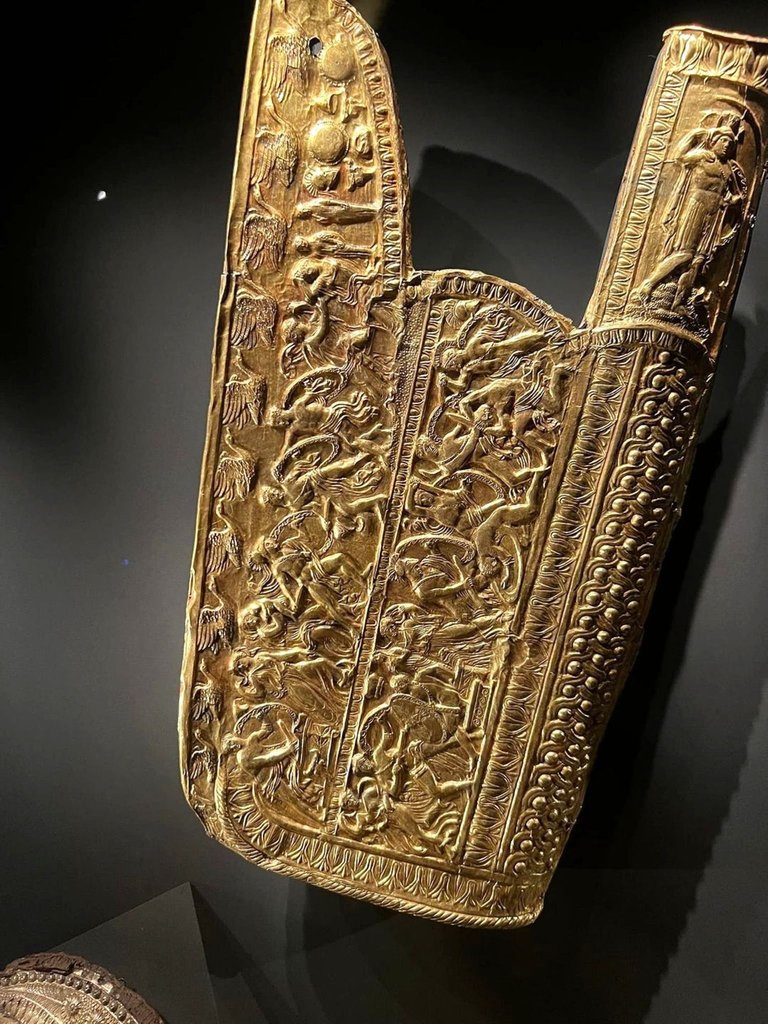

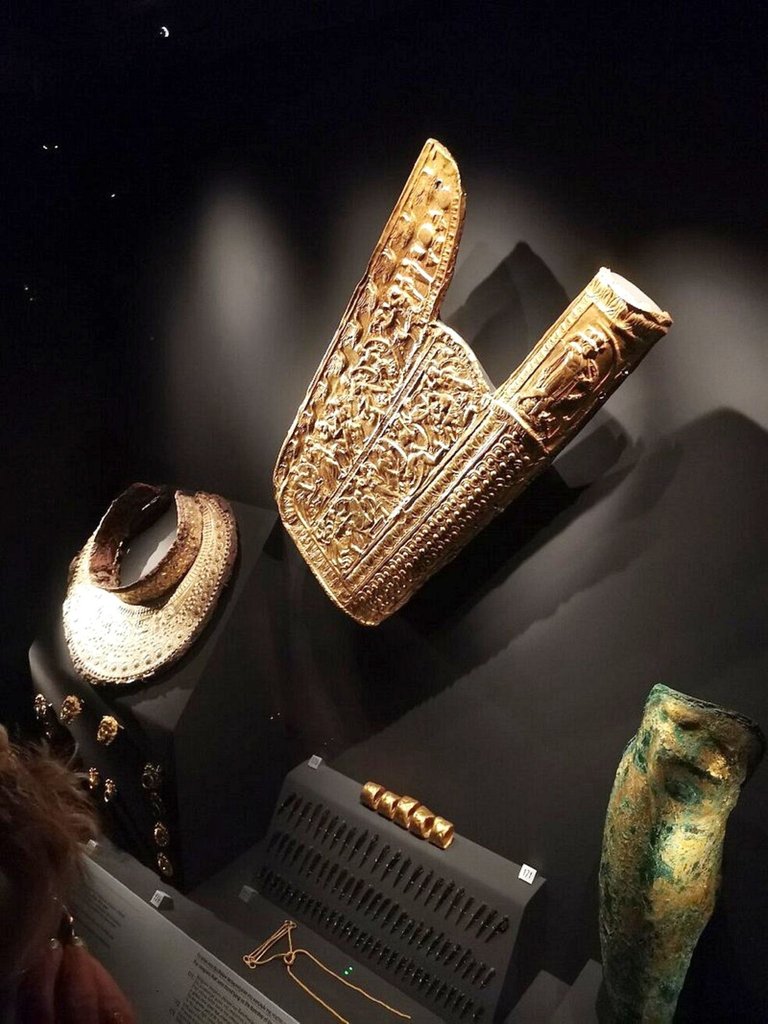
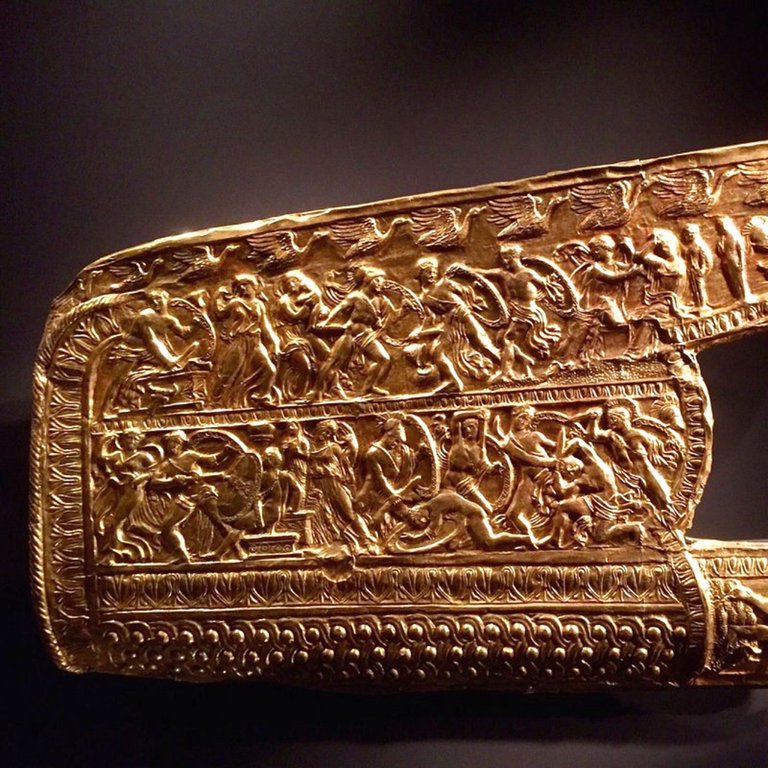
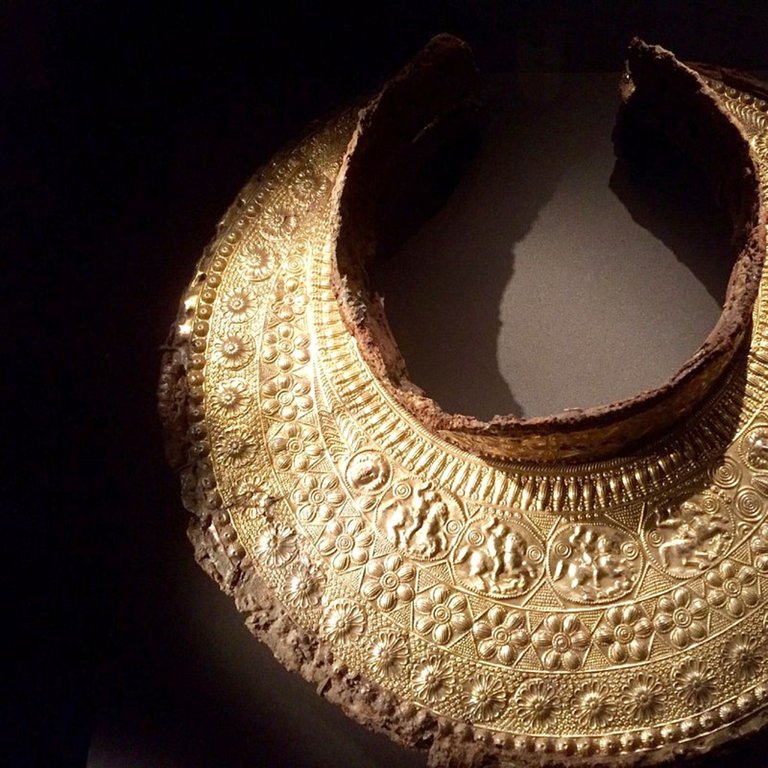

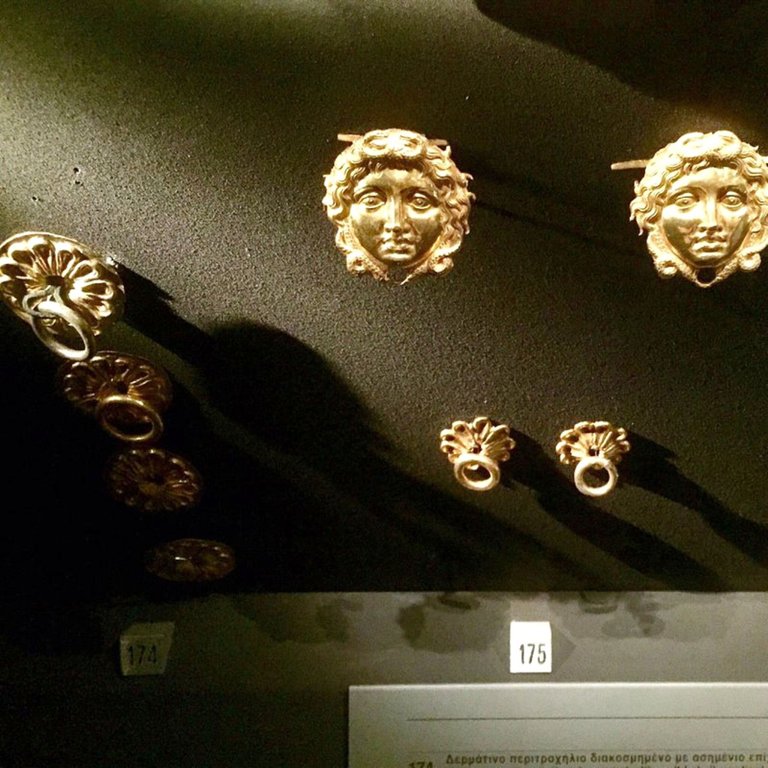

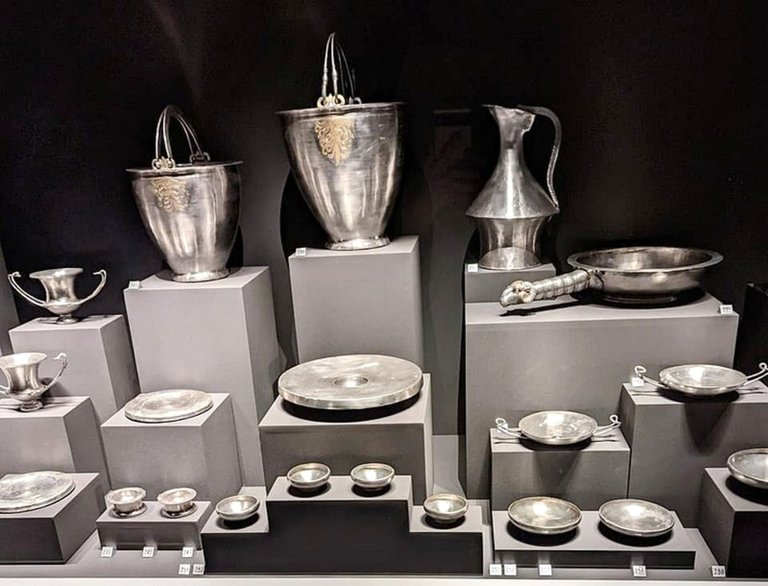
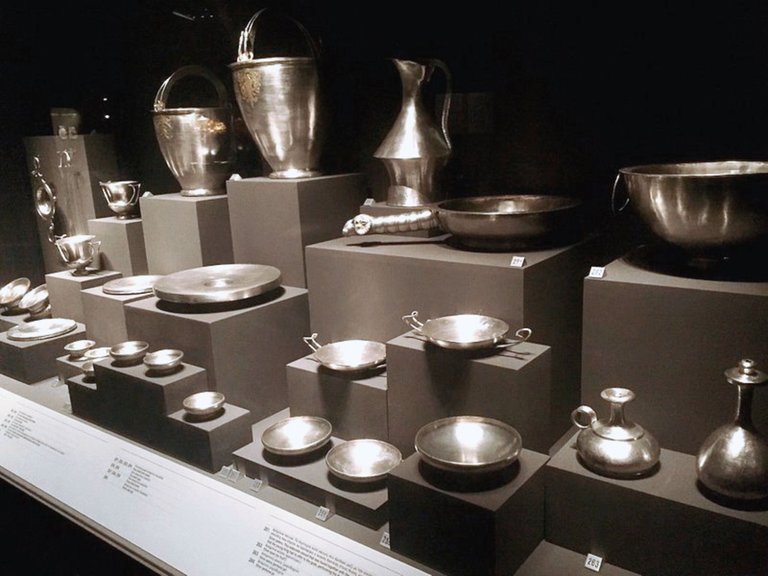

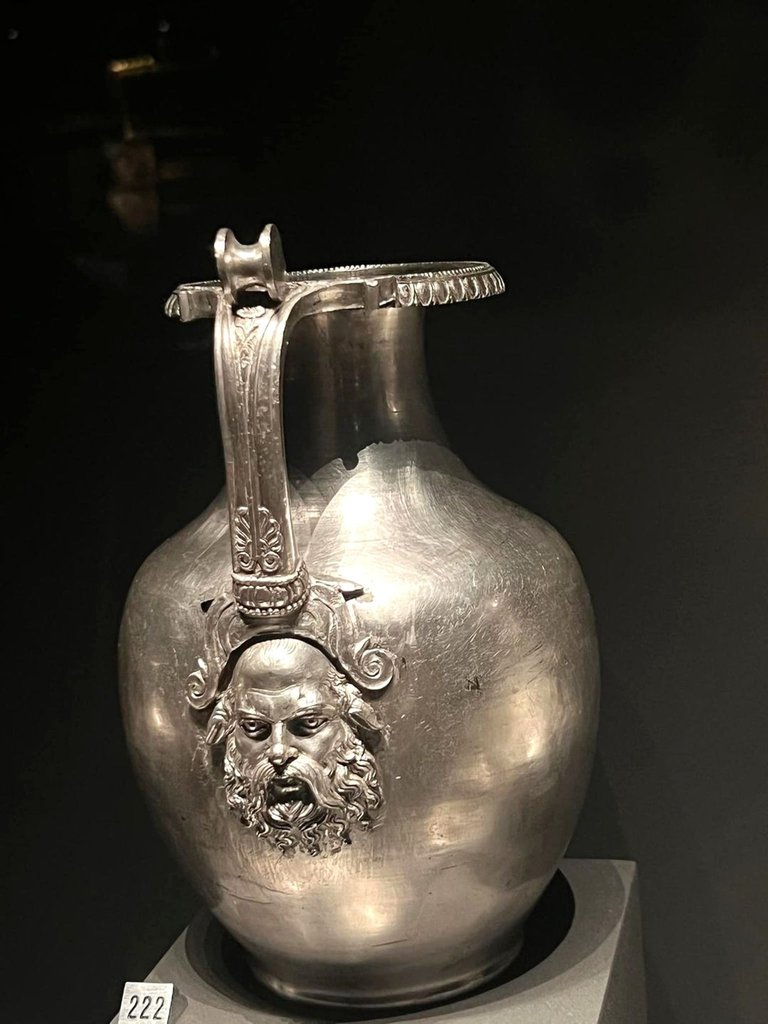
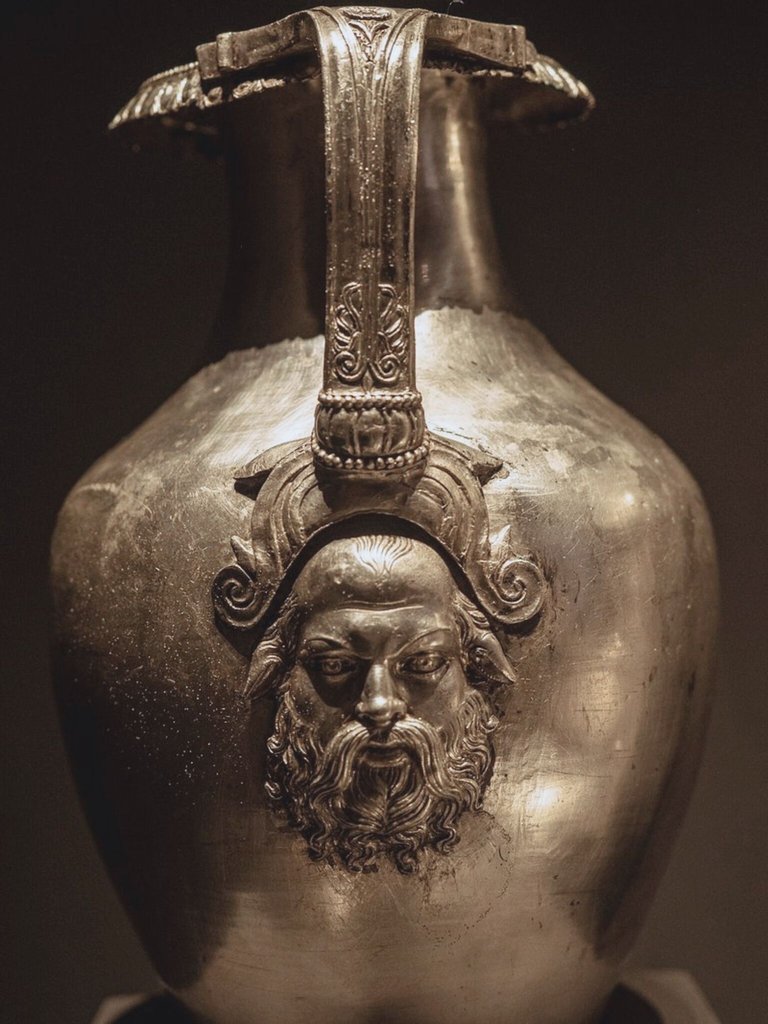
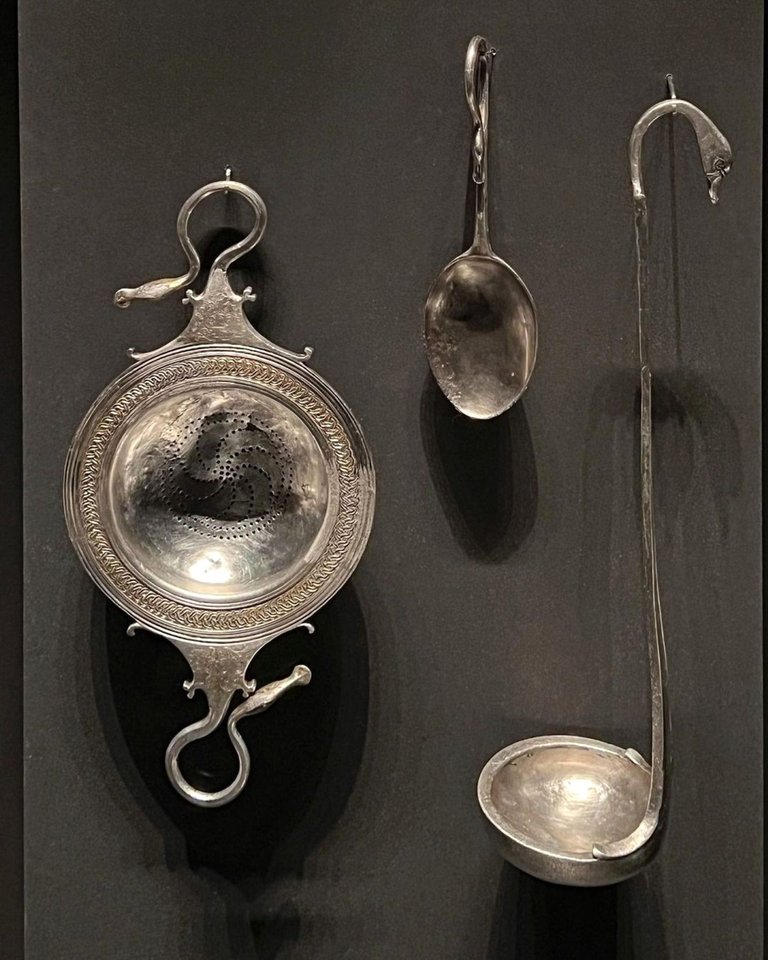
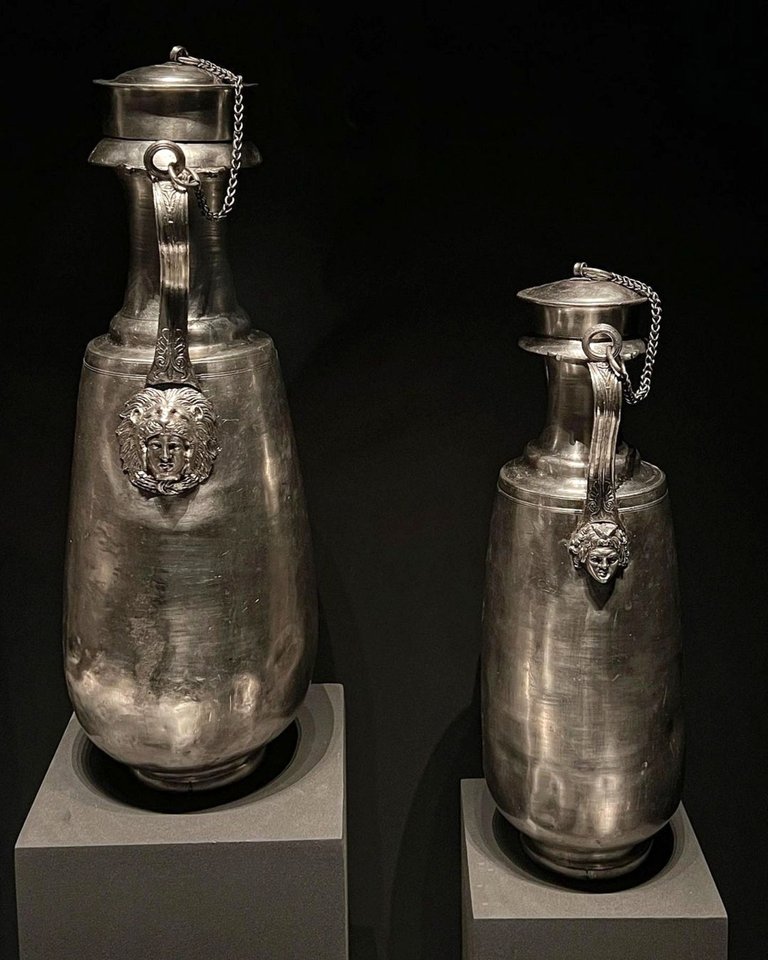
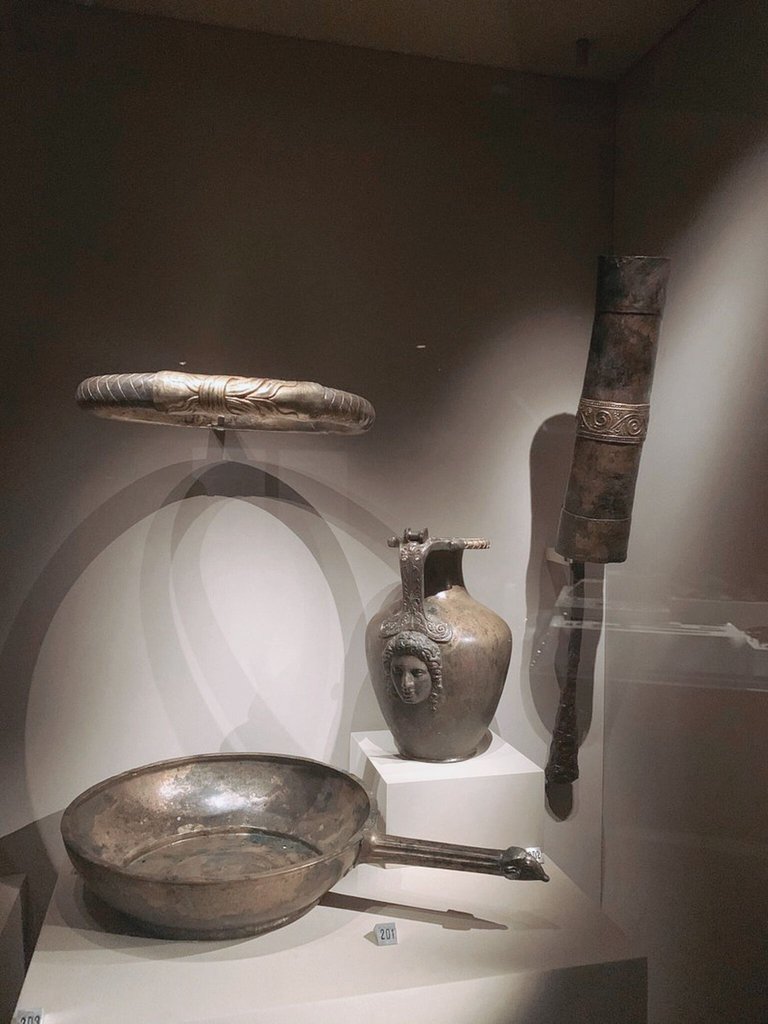
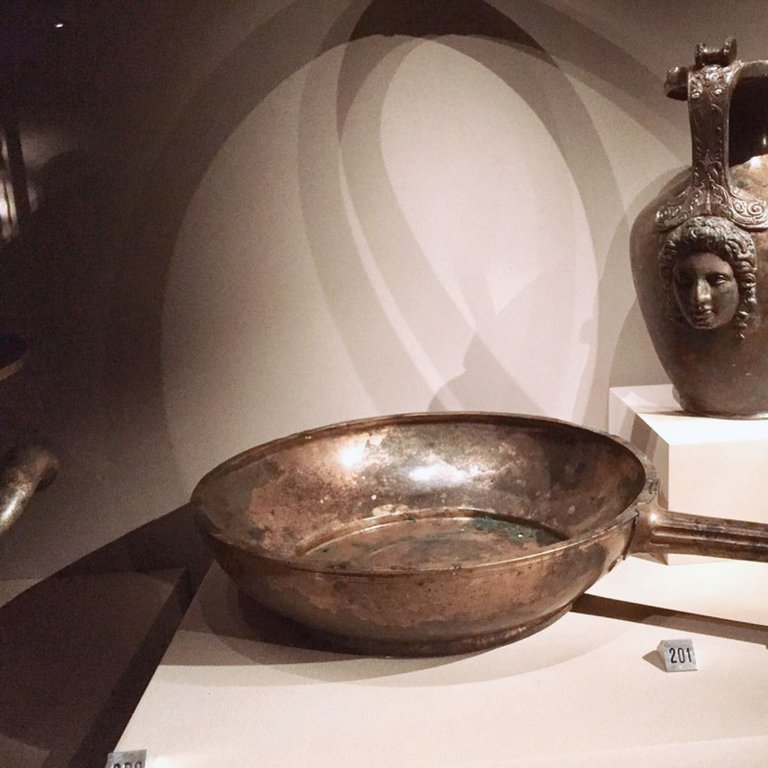
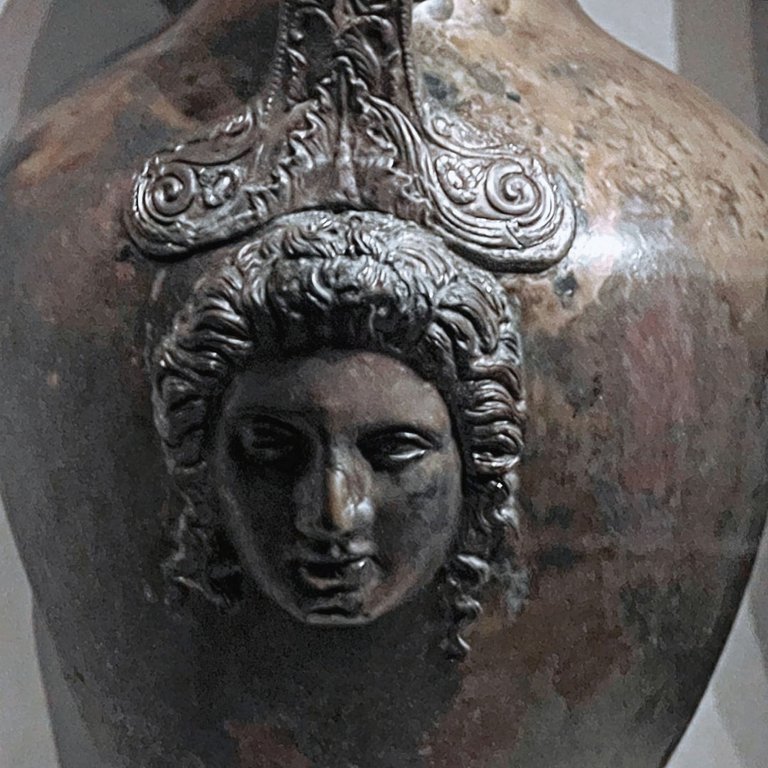
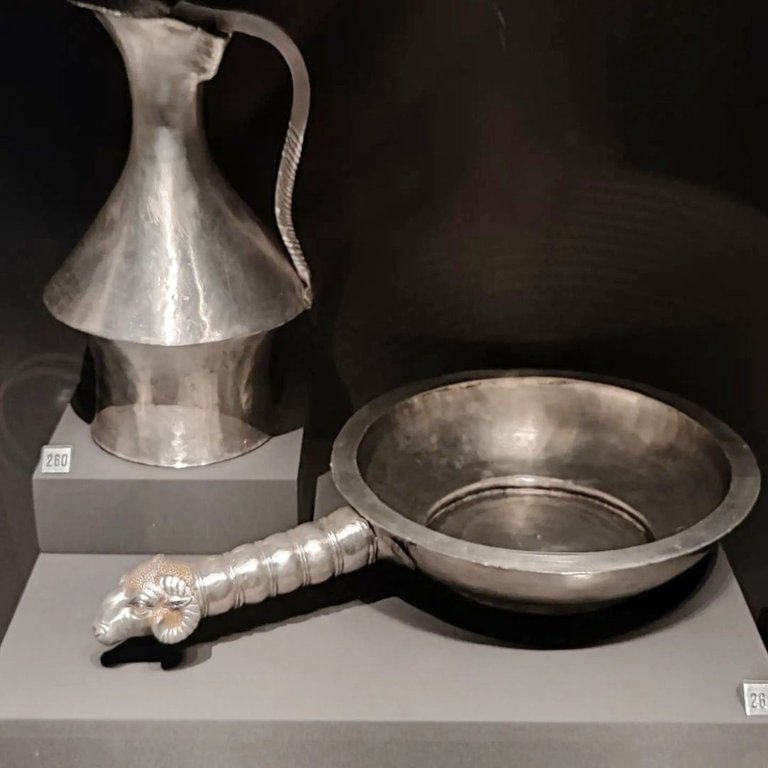

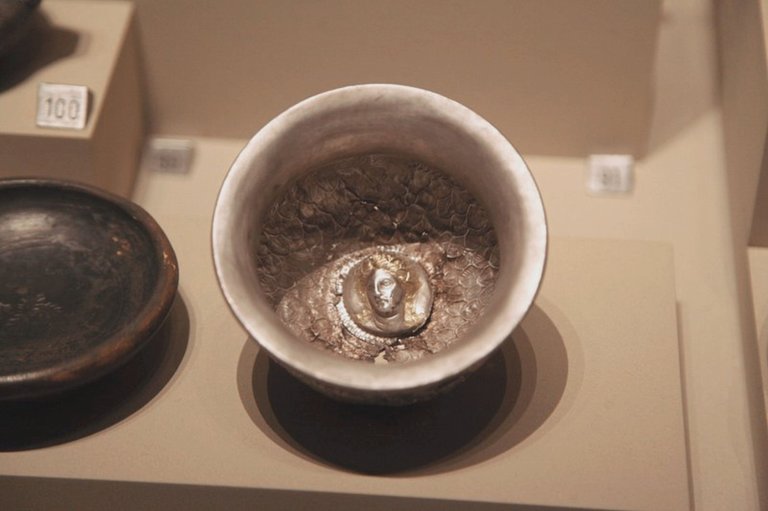
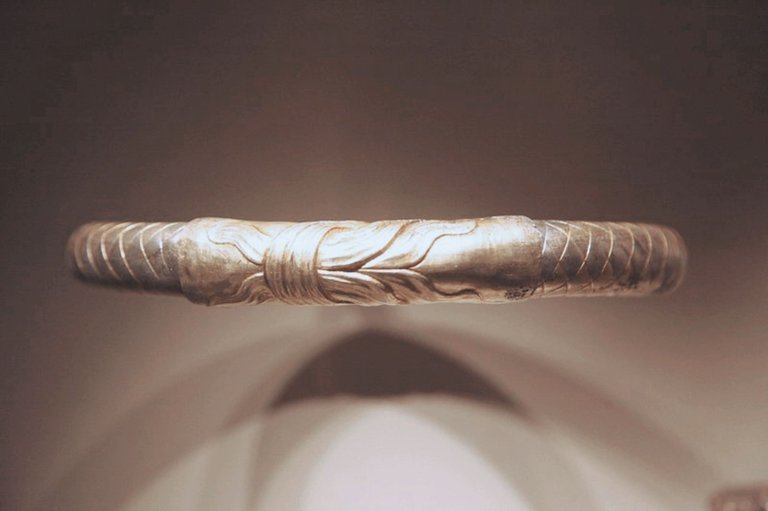
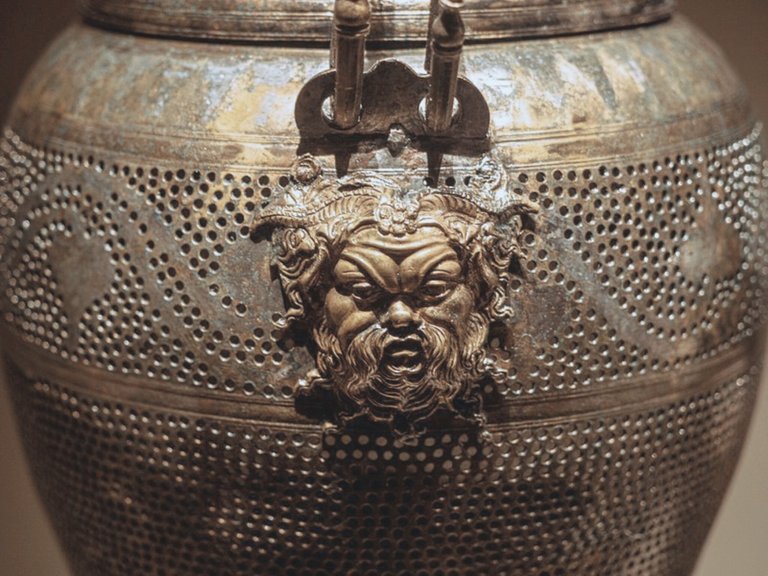
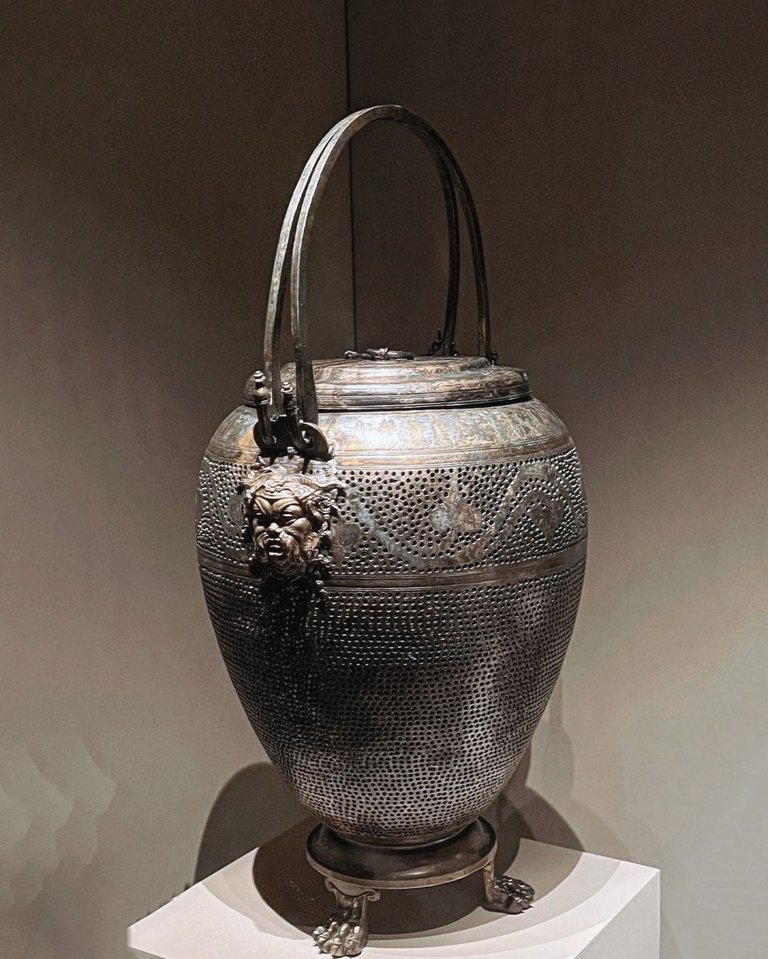
In addition the Macedonians believed in an afterlife, and their burial practices were designed to ensure that the dead were well-equipped for the journey to the underworld.In ancient Greece believed that the dead would need these objects in the afterlife, and so they would often bury the deceased with a range of objects. These objects would include pottery, jewelry, and weapons, and they would be carefully selected to ensure that the deceased had everything they needed for the journey to the afterlife.
Congratulations, your post has been added to Pinmapple! 🎉🥳🍍
Did you know you have your own profile map?
And every post has their own map too!
Want to have your post on the map too?
Congratulations @giorgakis! You have completed the following achievement on the Hive blockchain And have been rewarded with New badge(s)
Your next target is to reach 9000 upvotes.
You can view your badges on your board and compare yourself to others in the Ranking
If you no longer want to receive notifications, reply to this comment with the word
STOPCheck out our last posts:
Hiya, @livinguktaiwan here, just swinging by to let you know that this post made it into our Honorable Mentions in Travel Digest #2042.
Your post has been manually curated by the @pinmapple team. If you like what we're doing, please drop by to check out all the rest of today's great posts and consider supporting other authors like yourself and us so we can keep the project going!
Become part of our travel community: